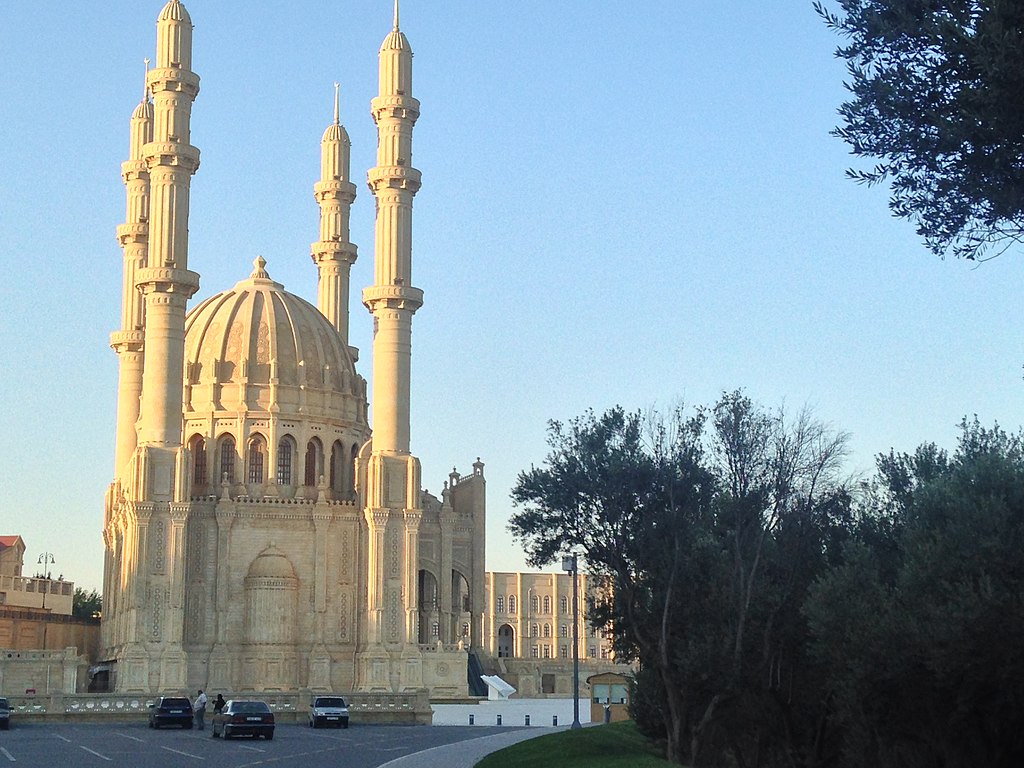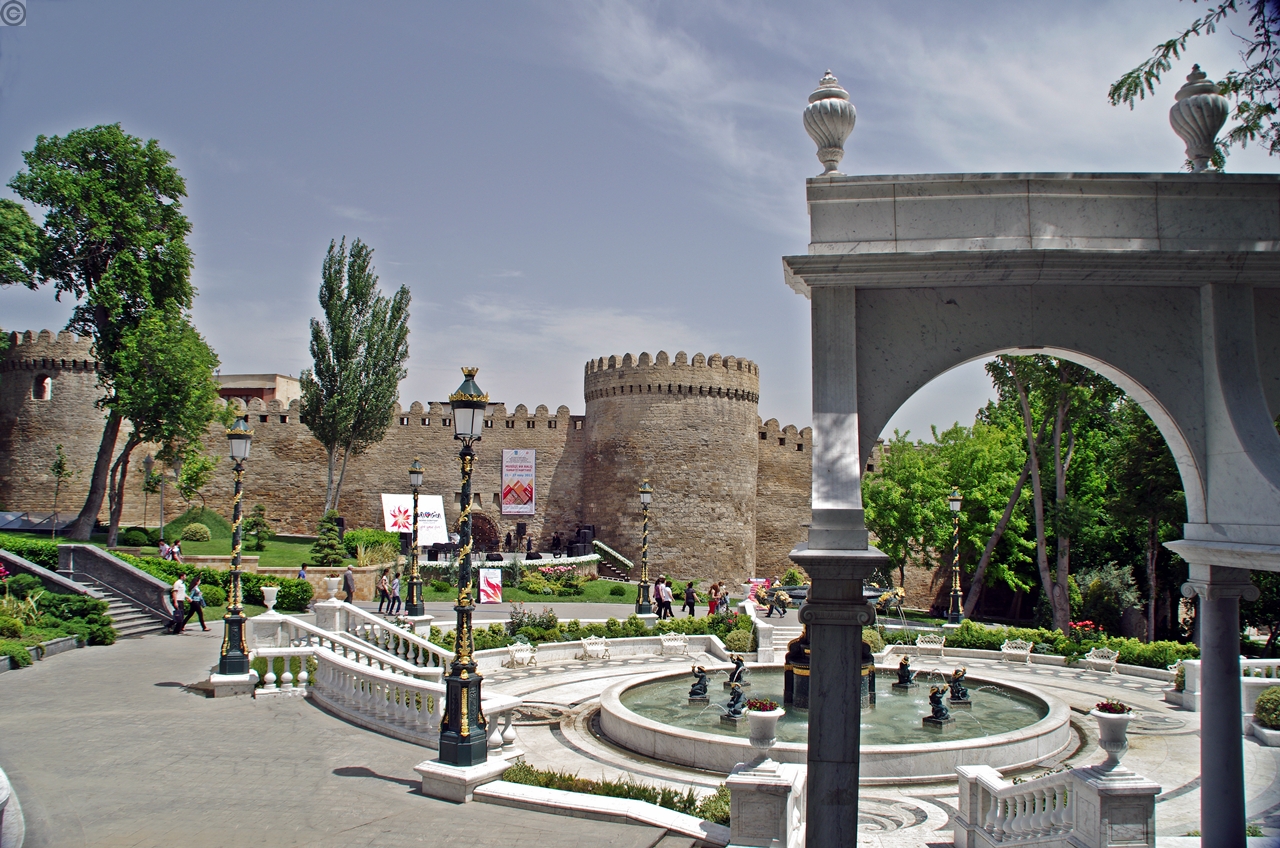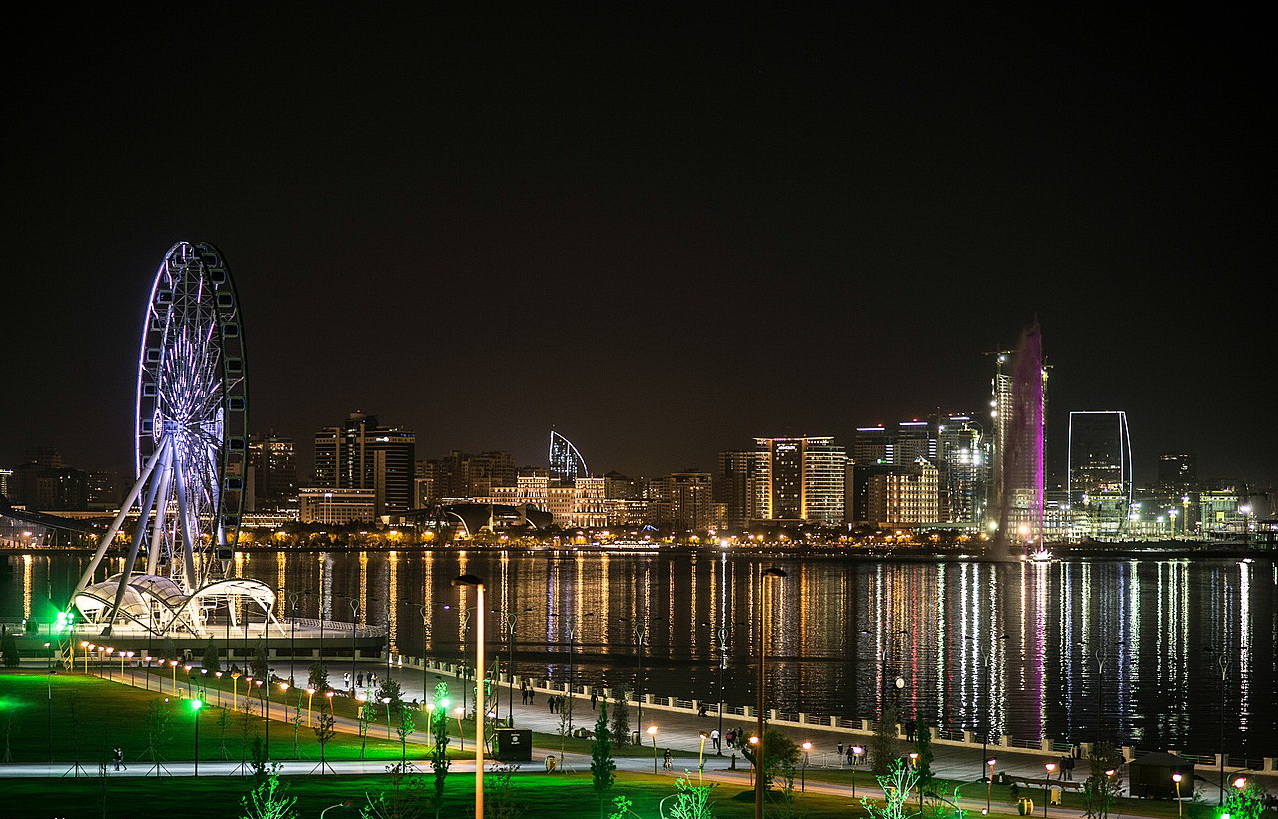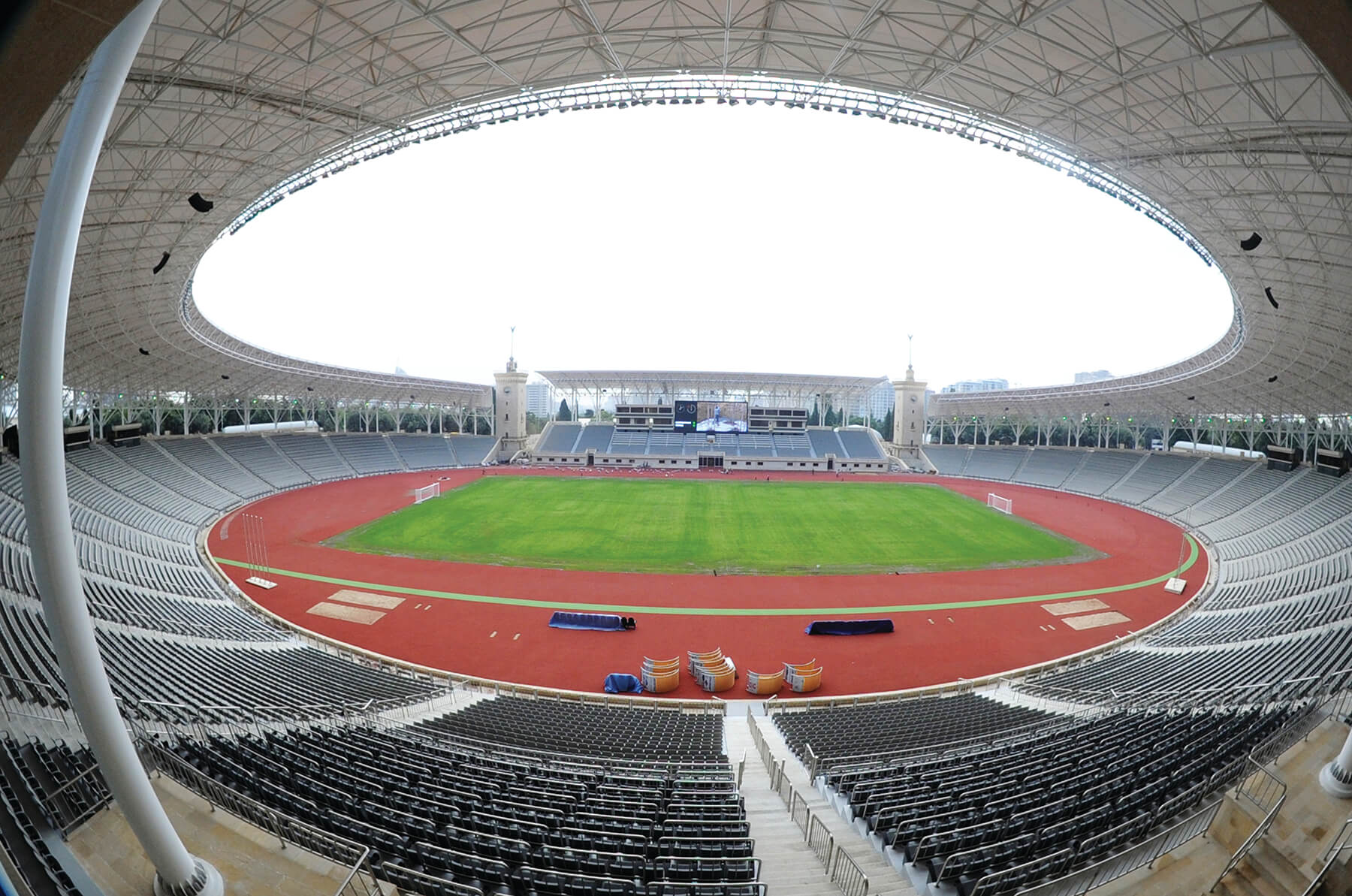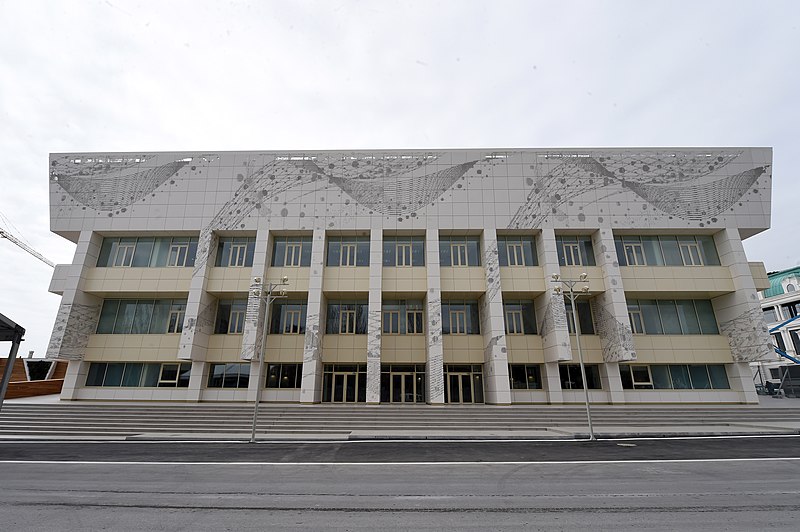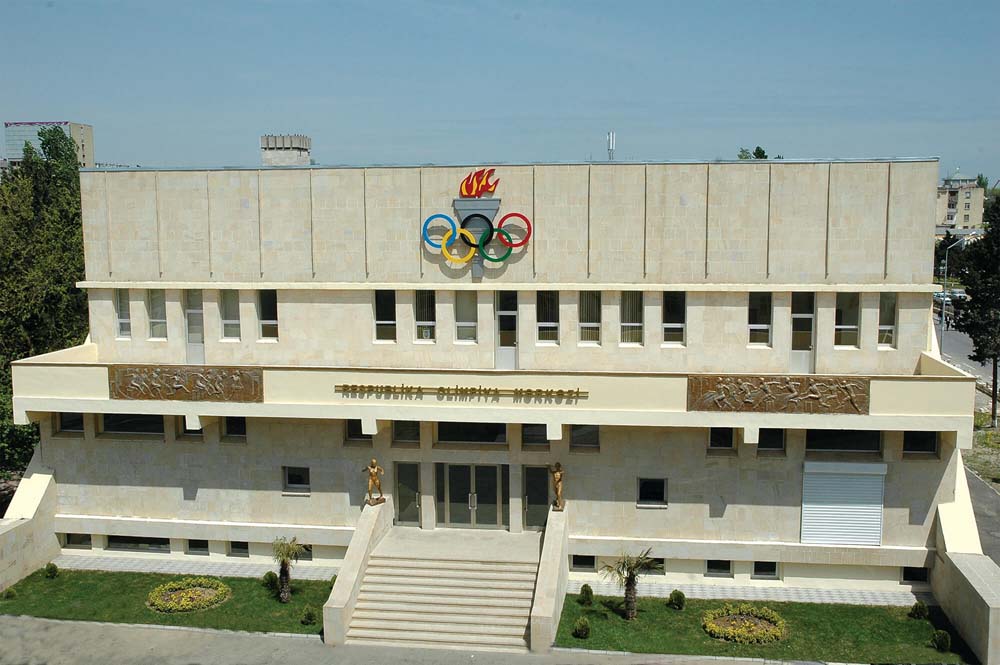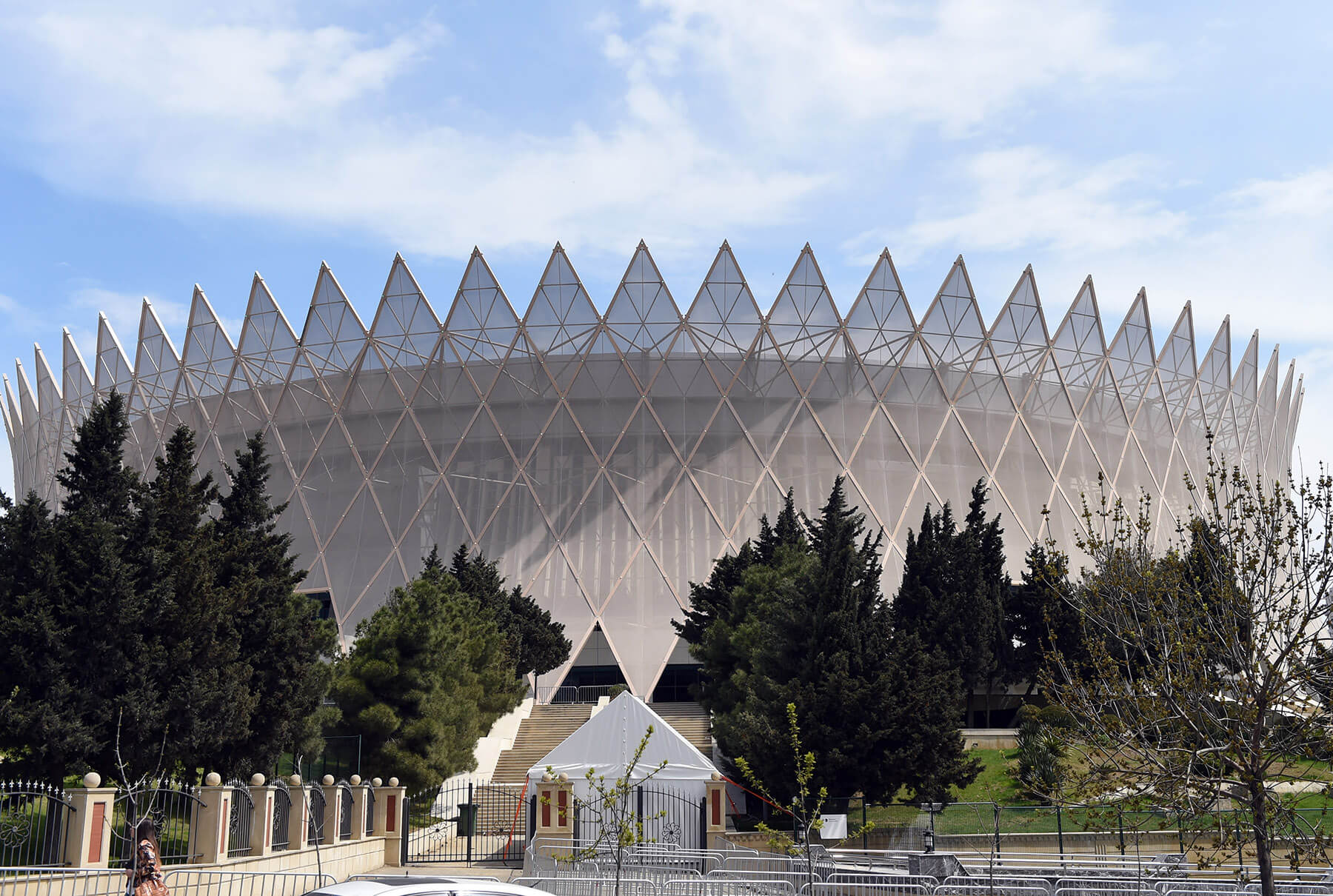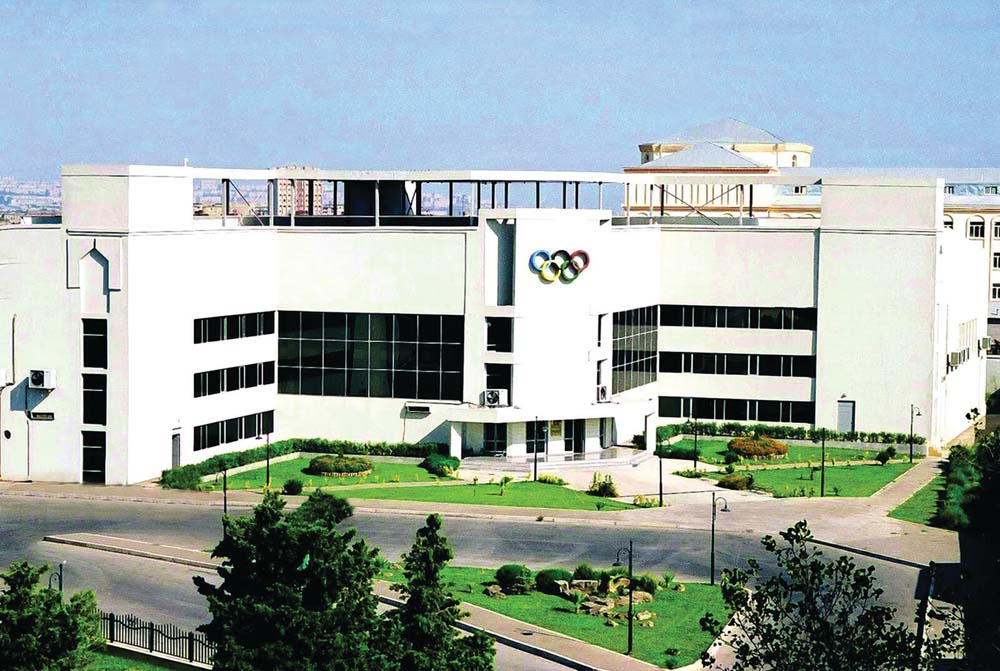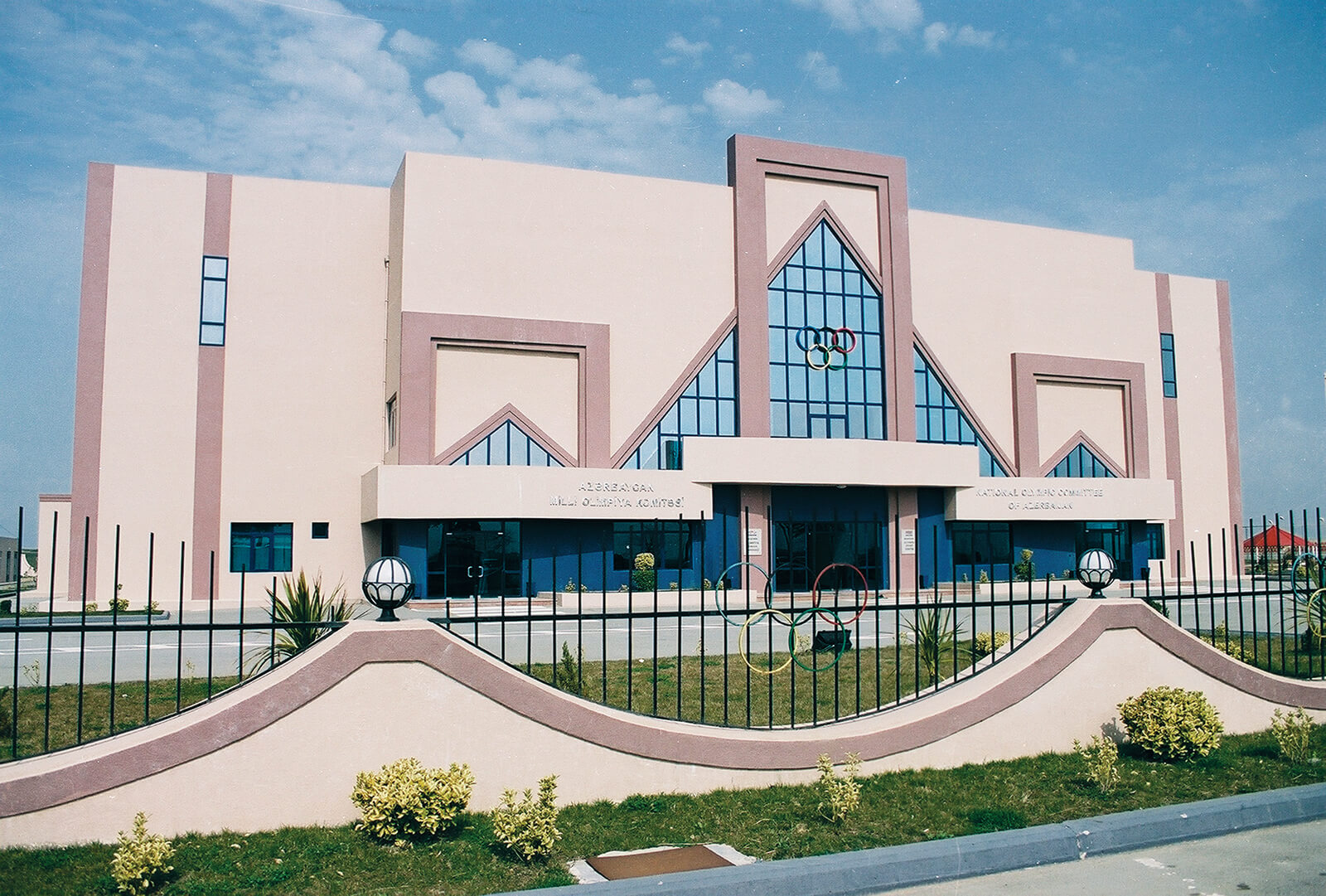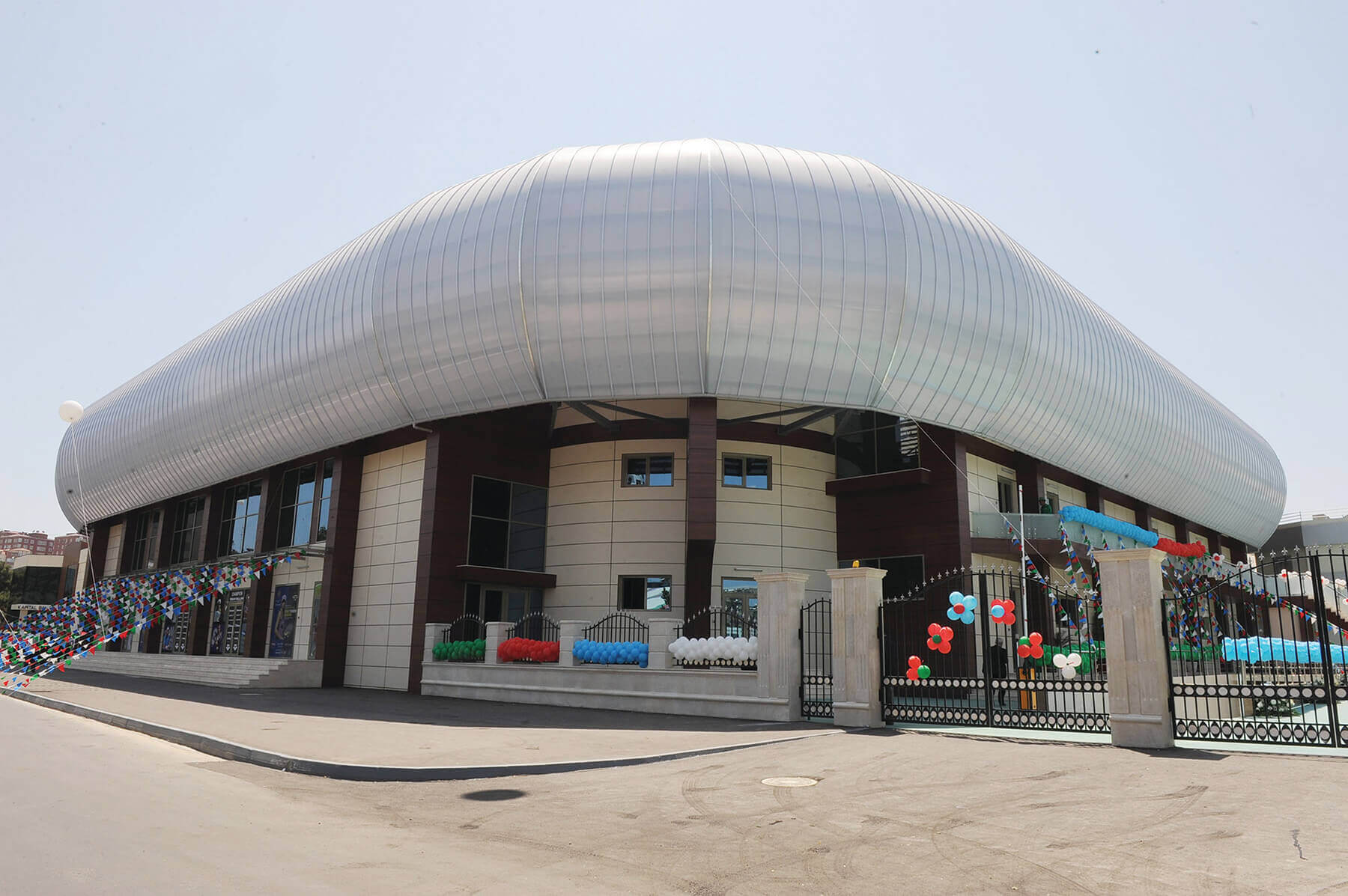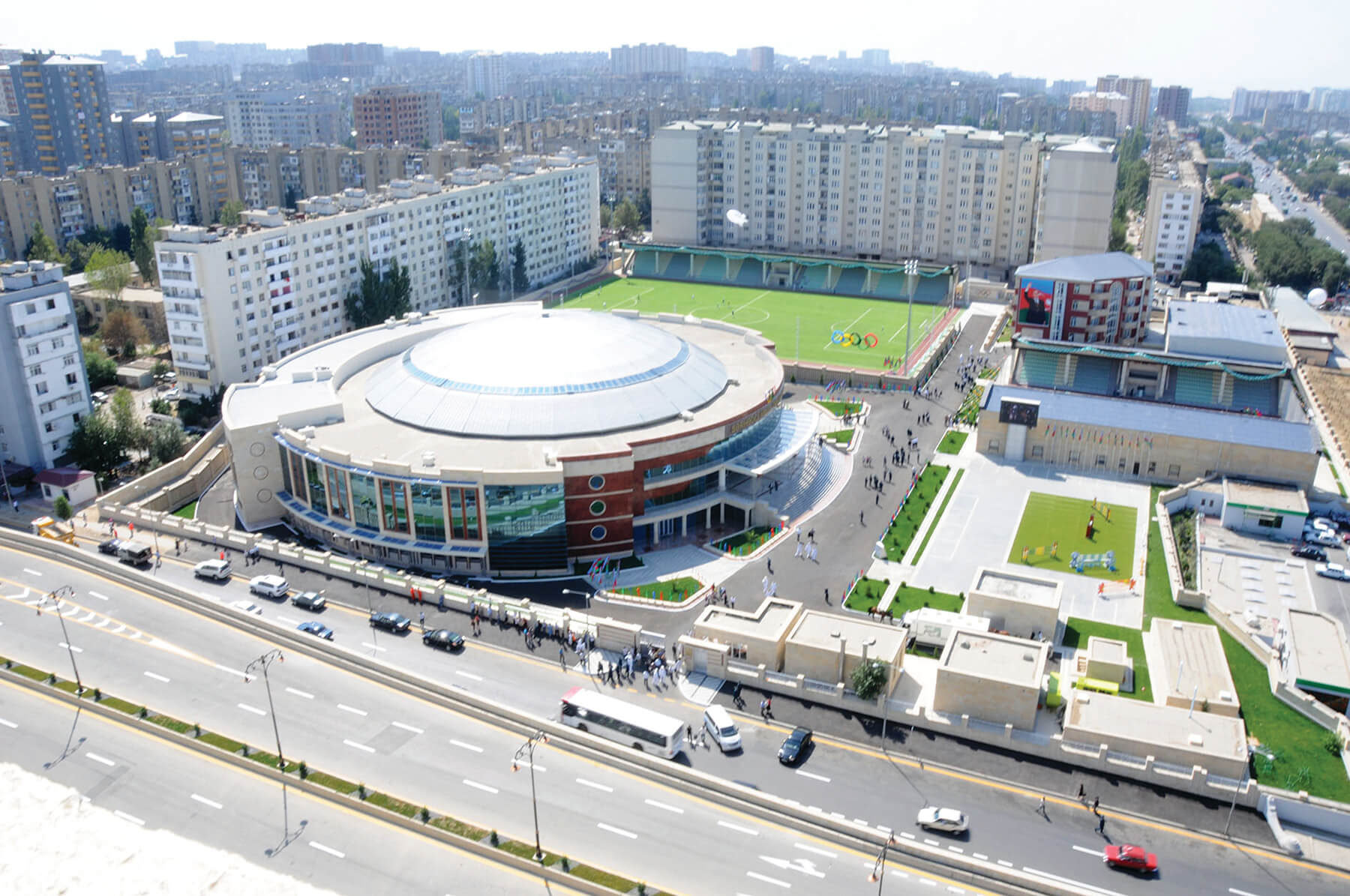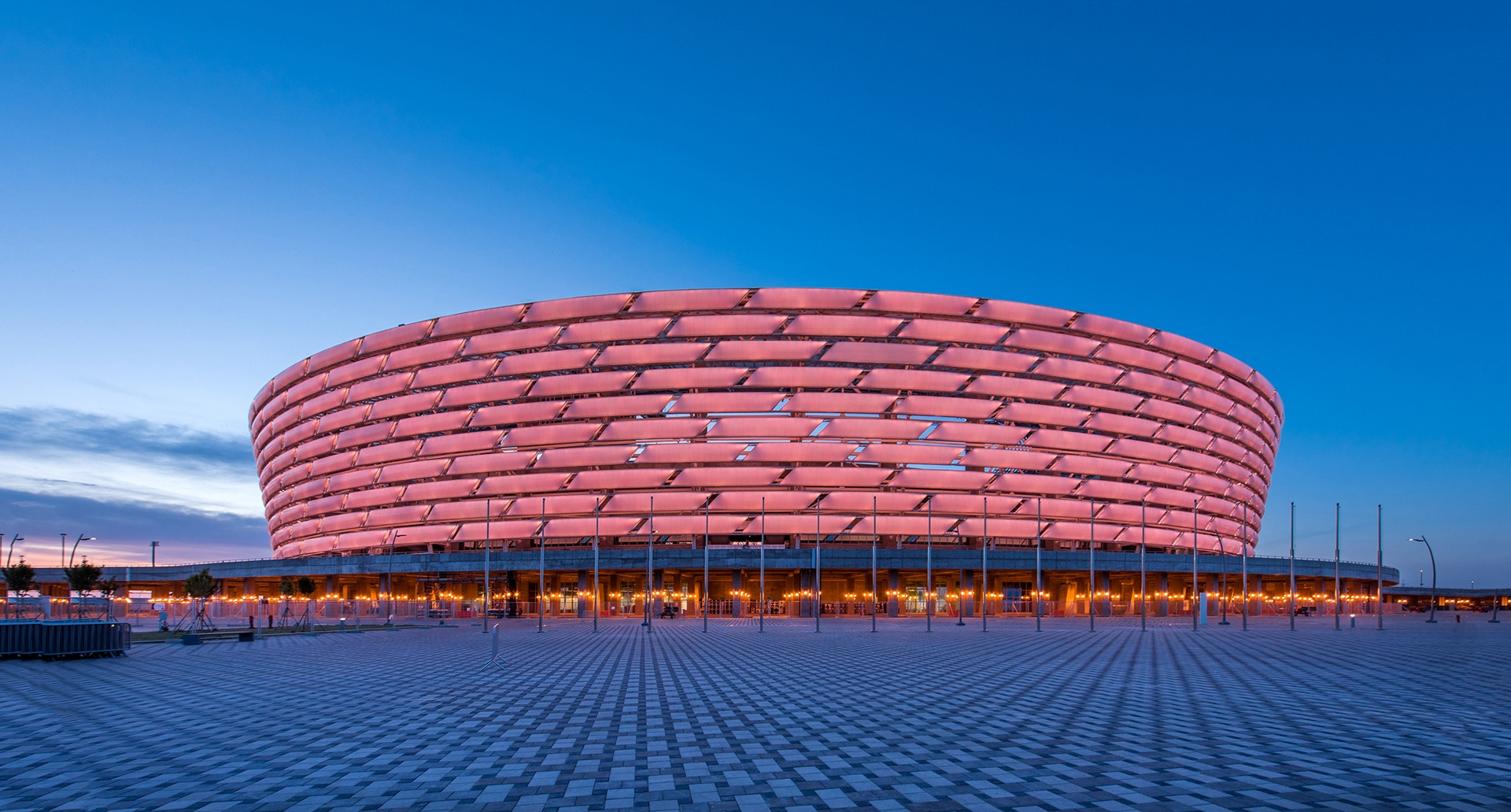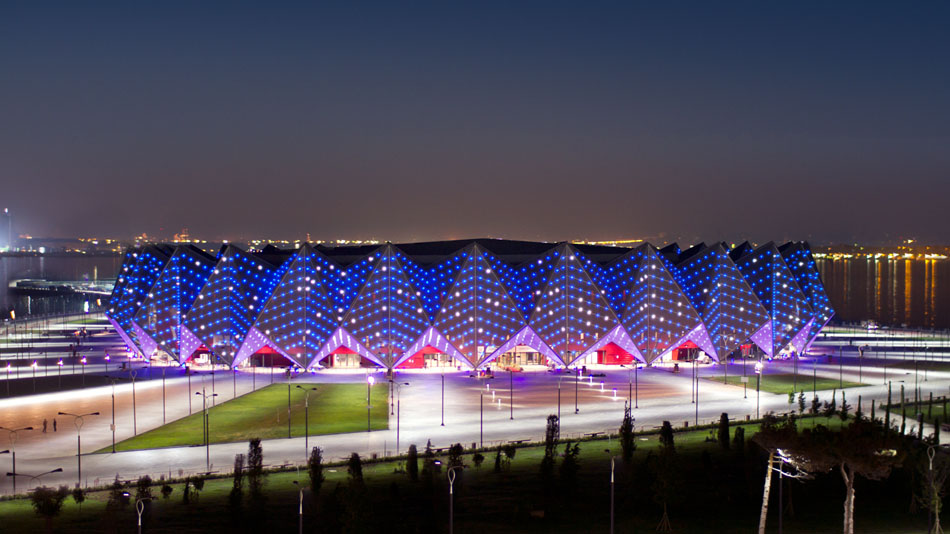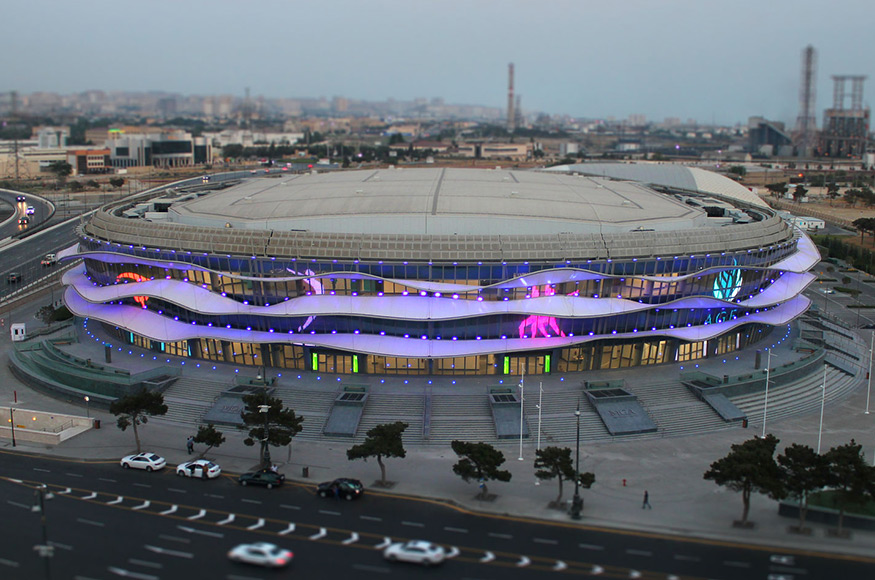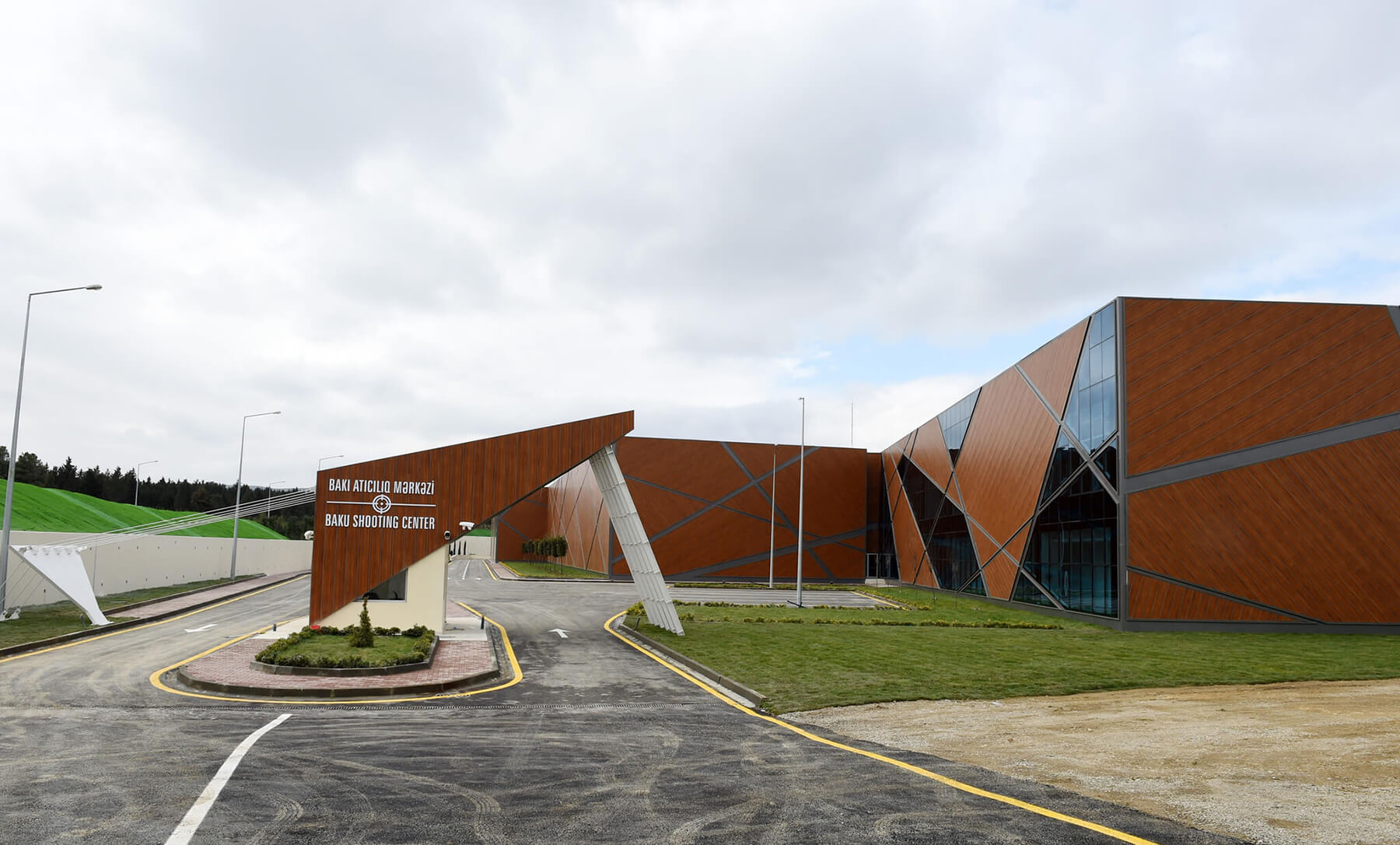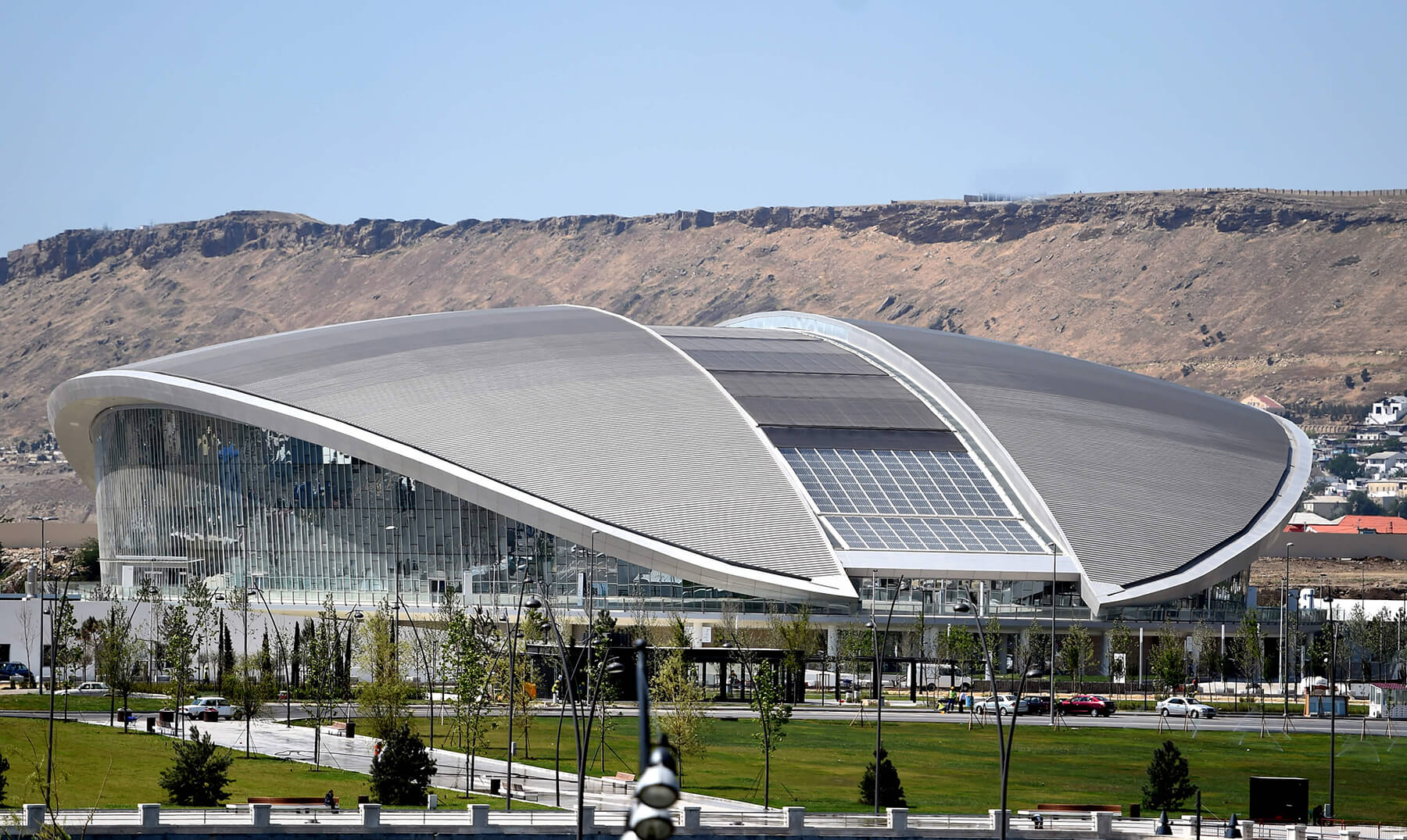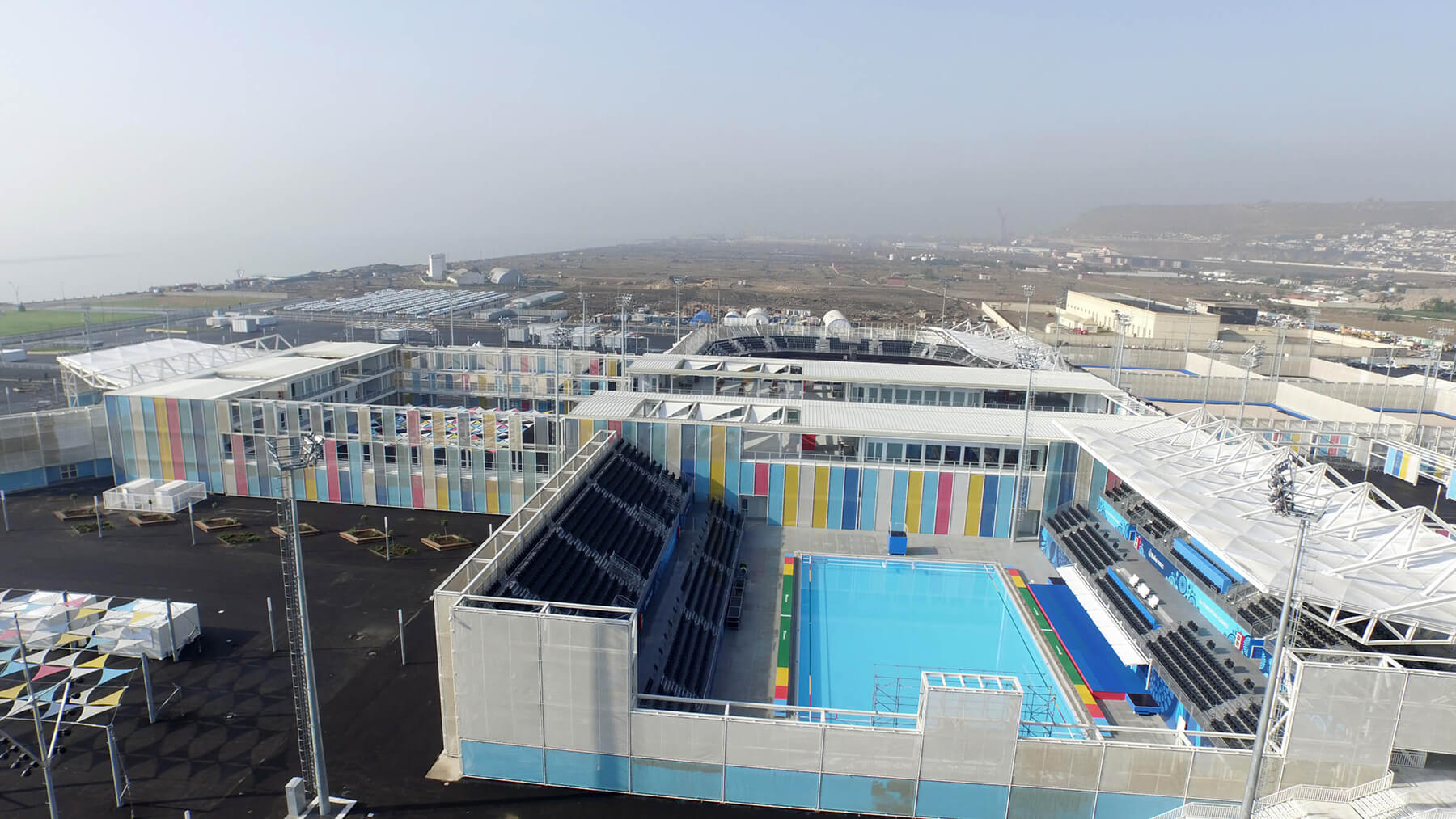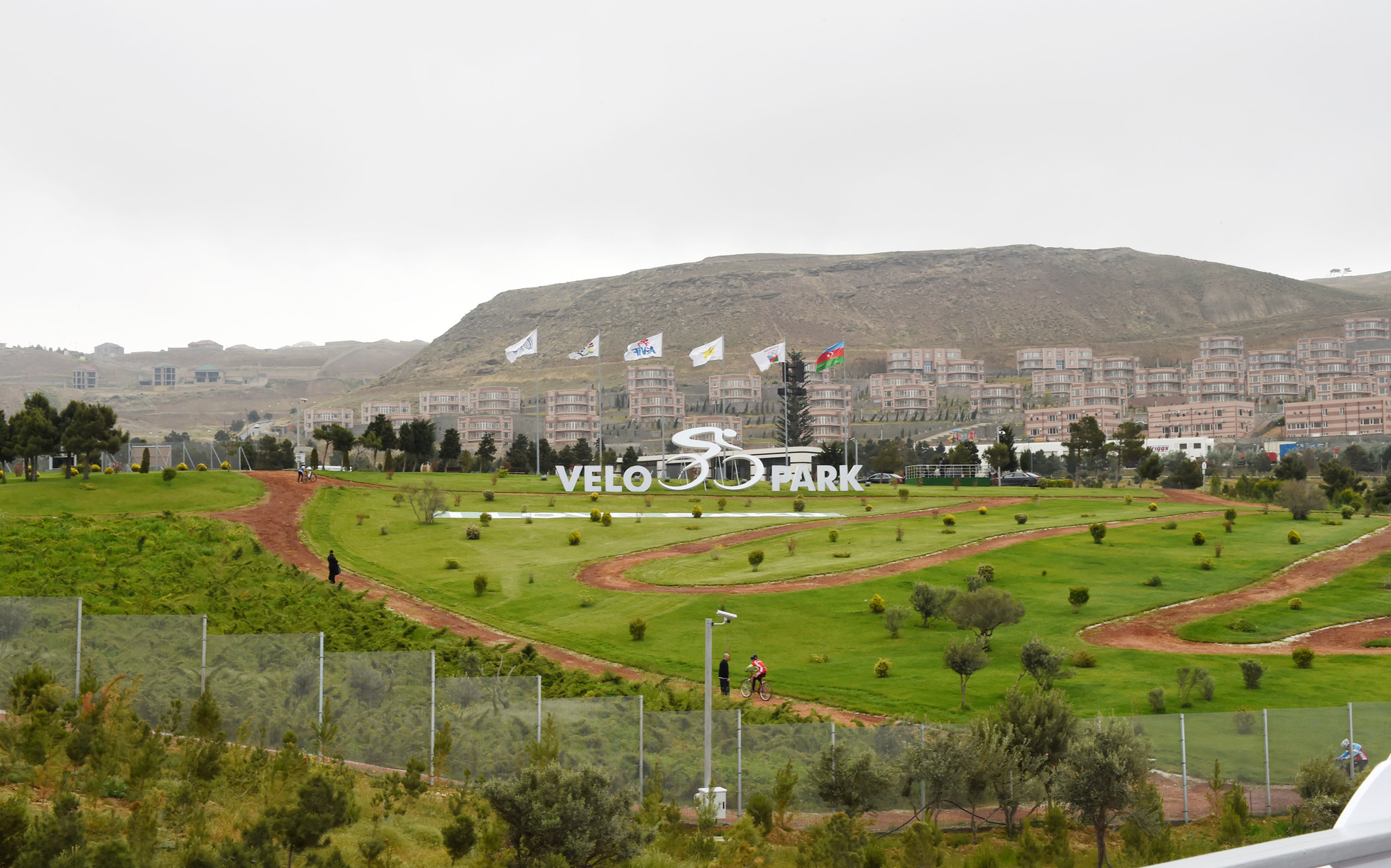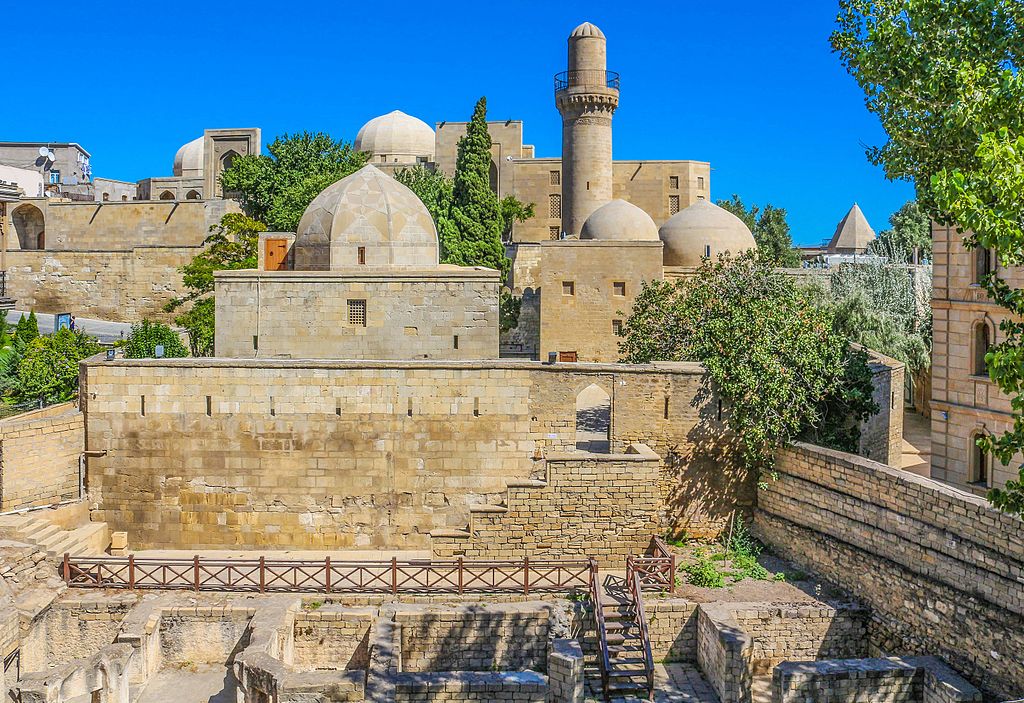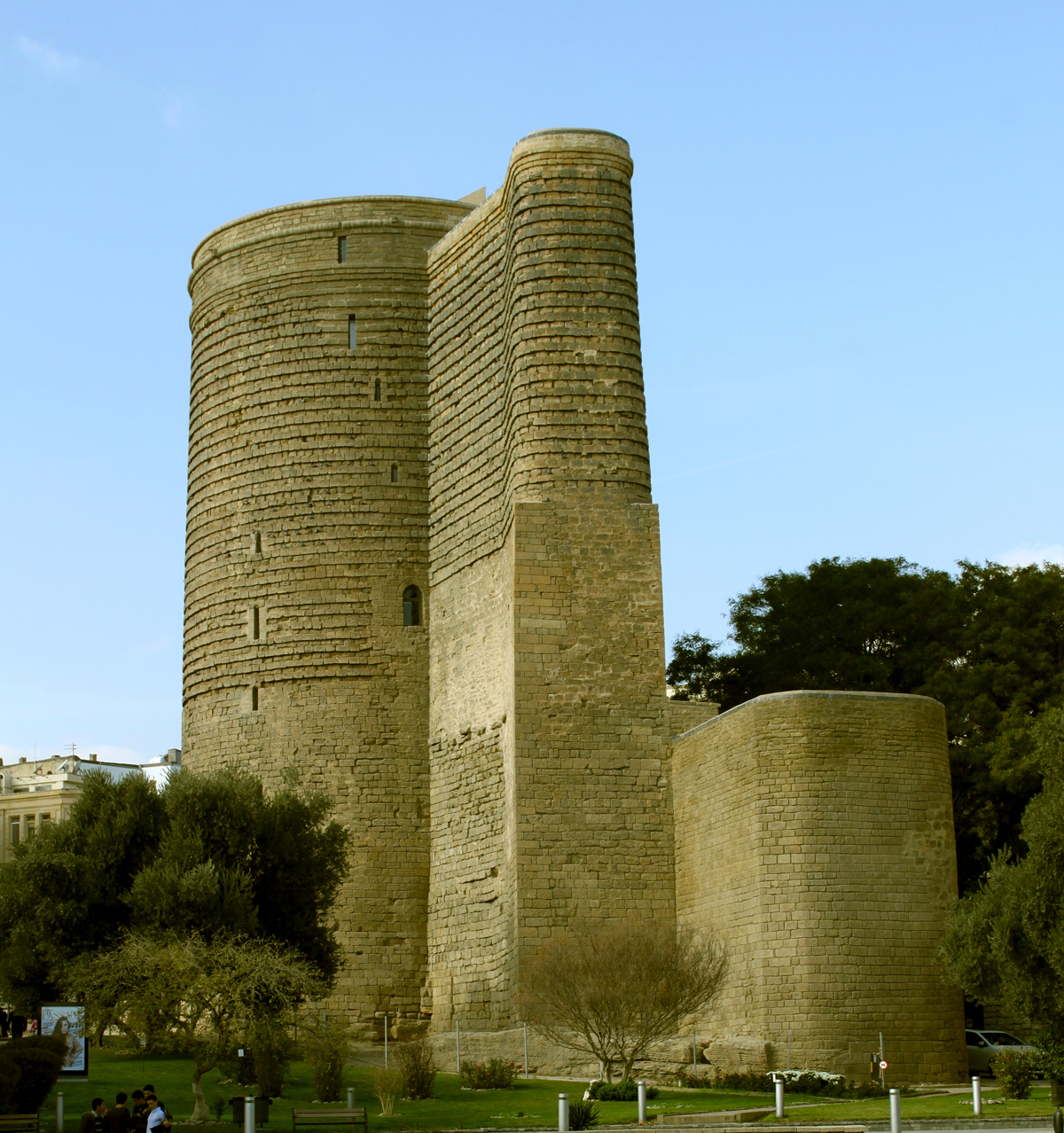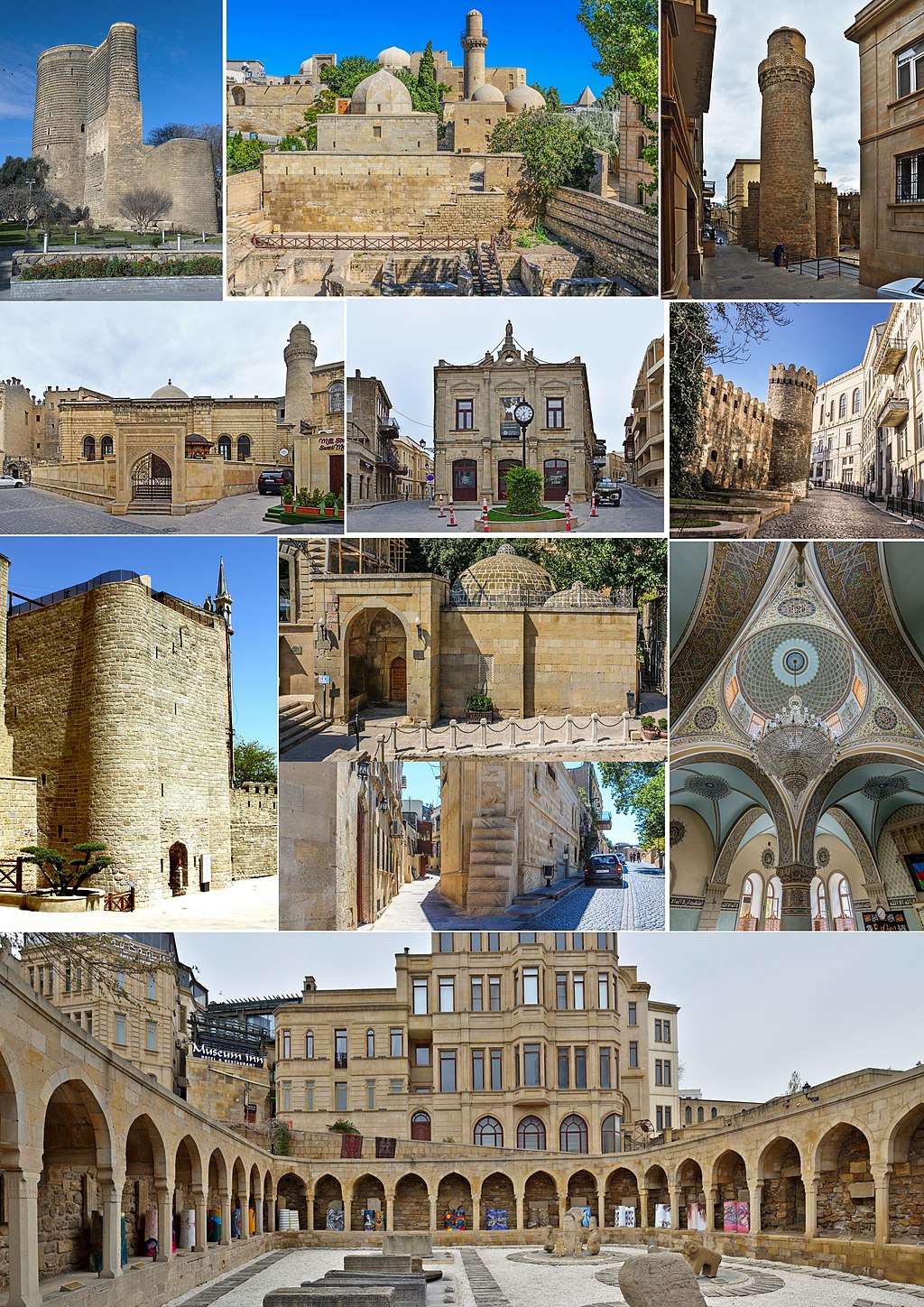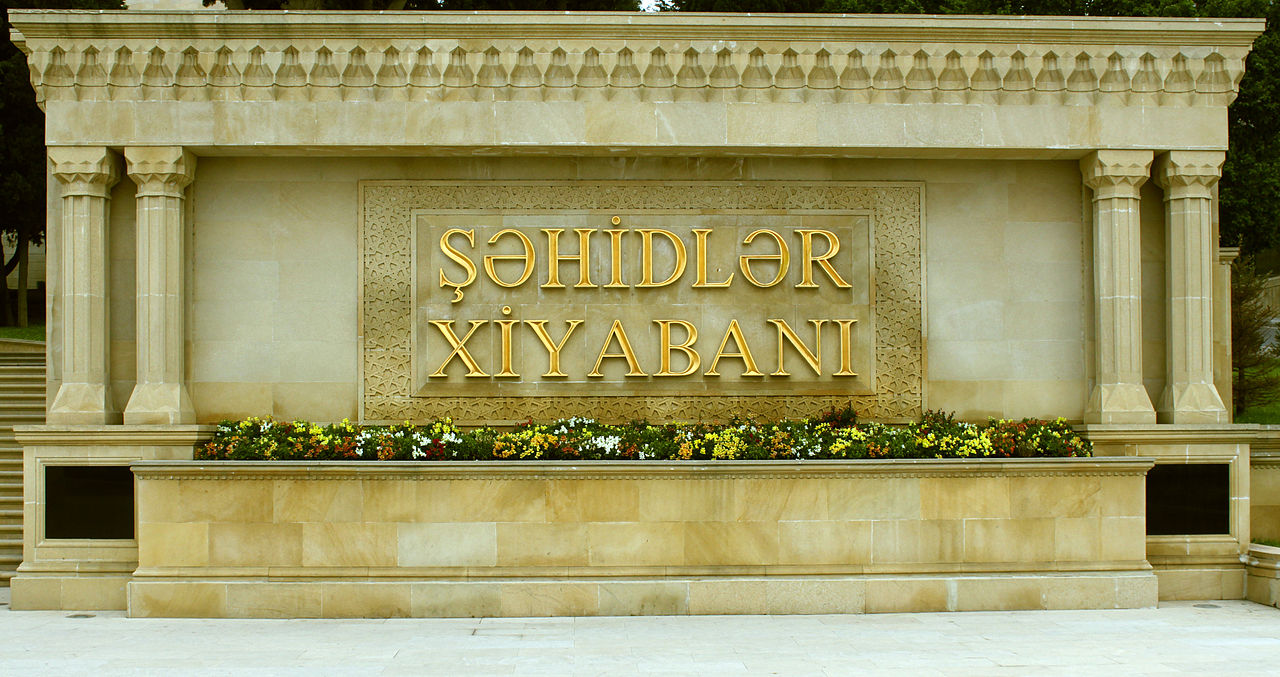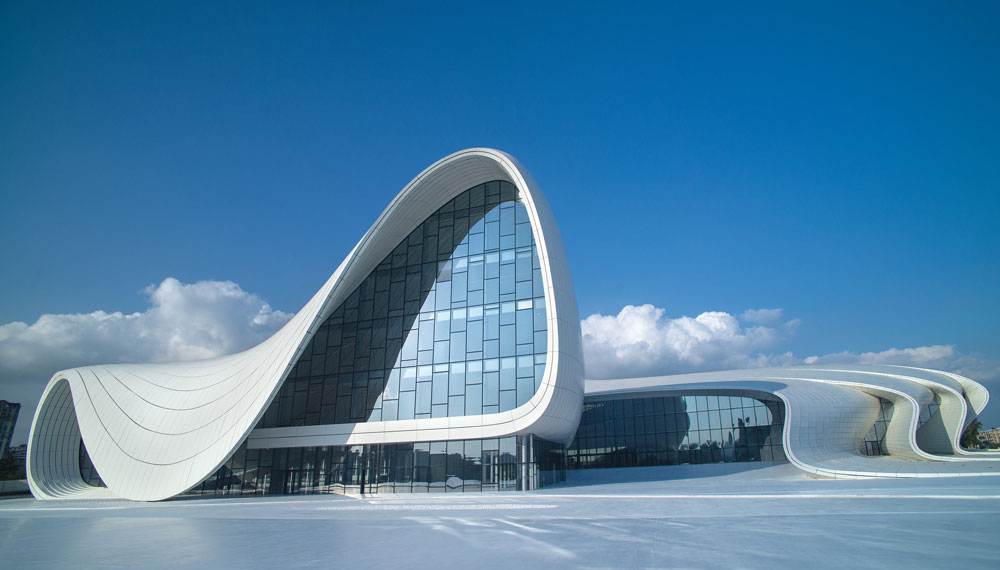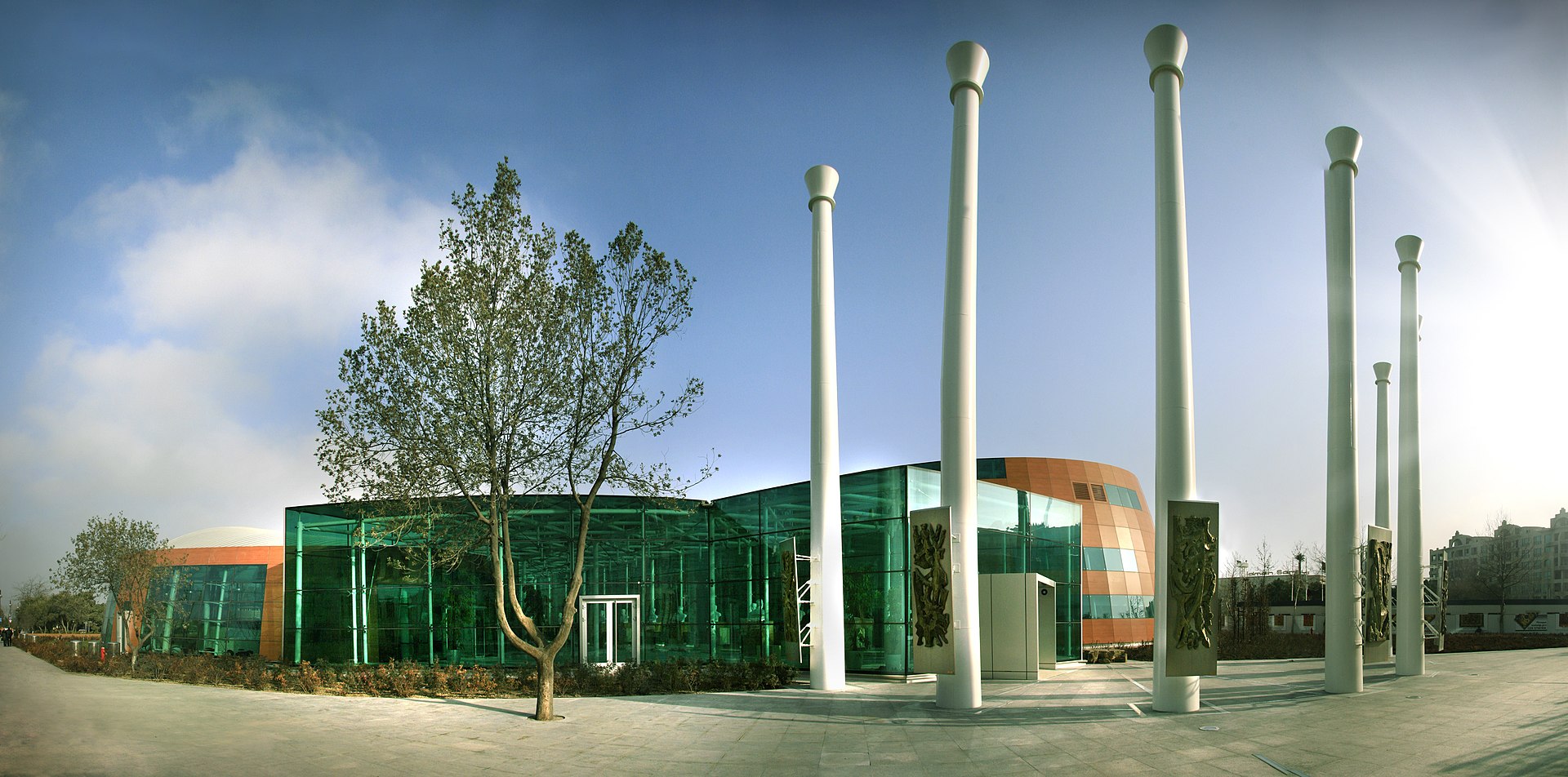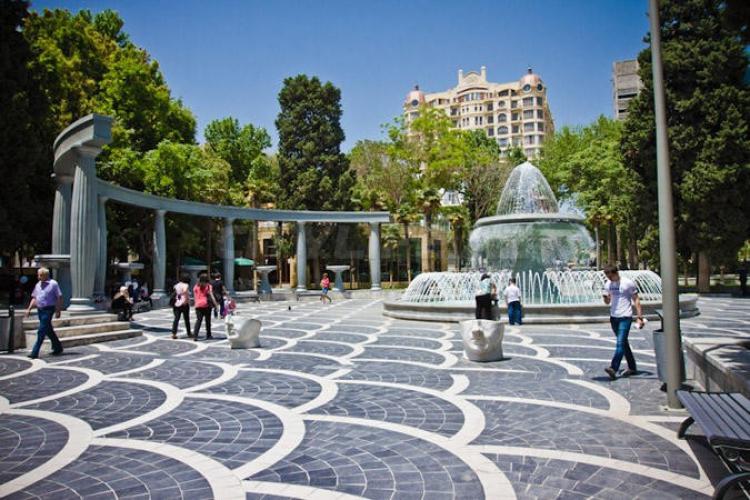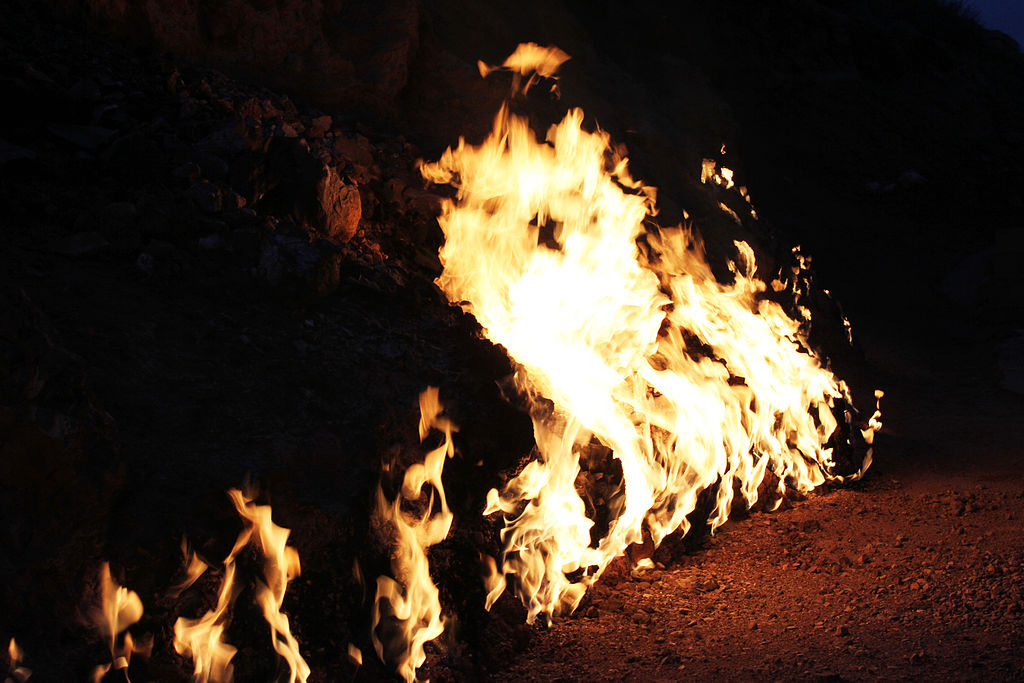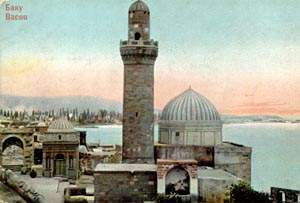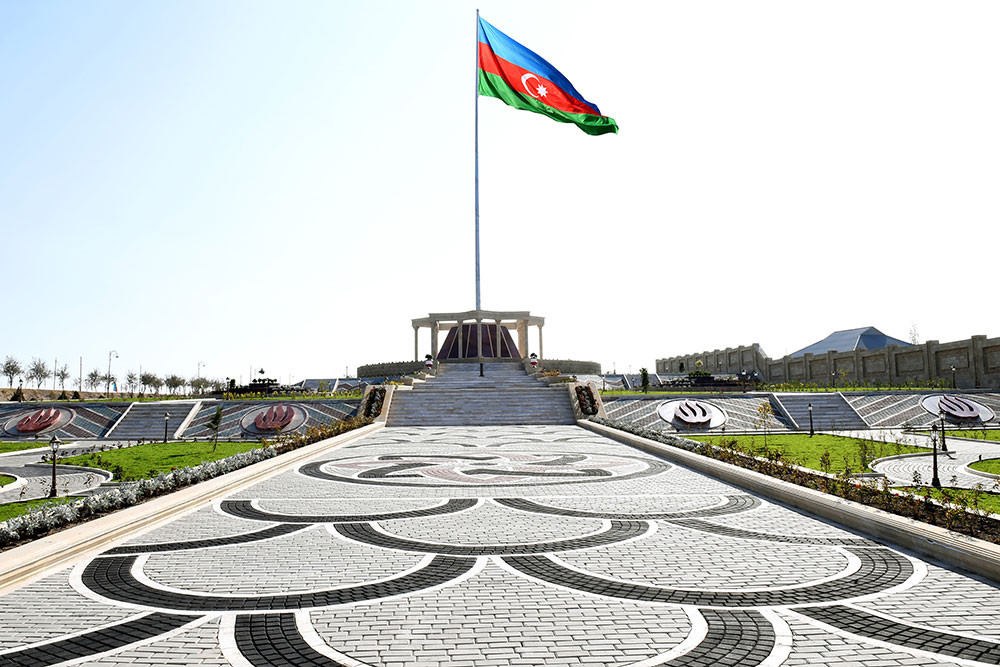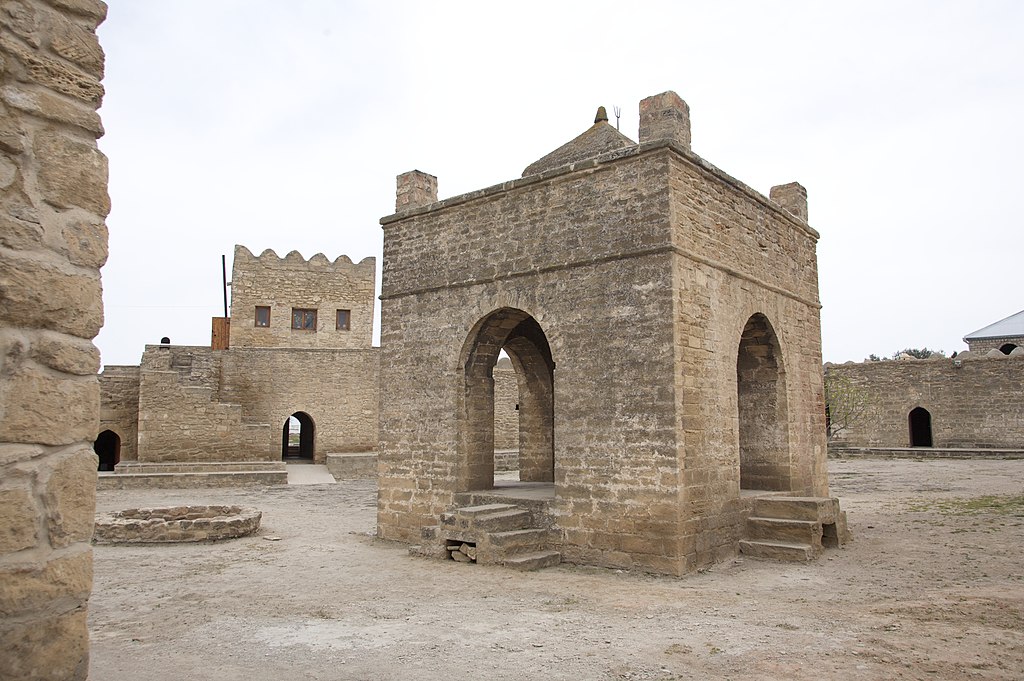Azerbaijan Musical Comedy Theater
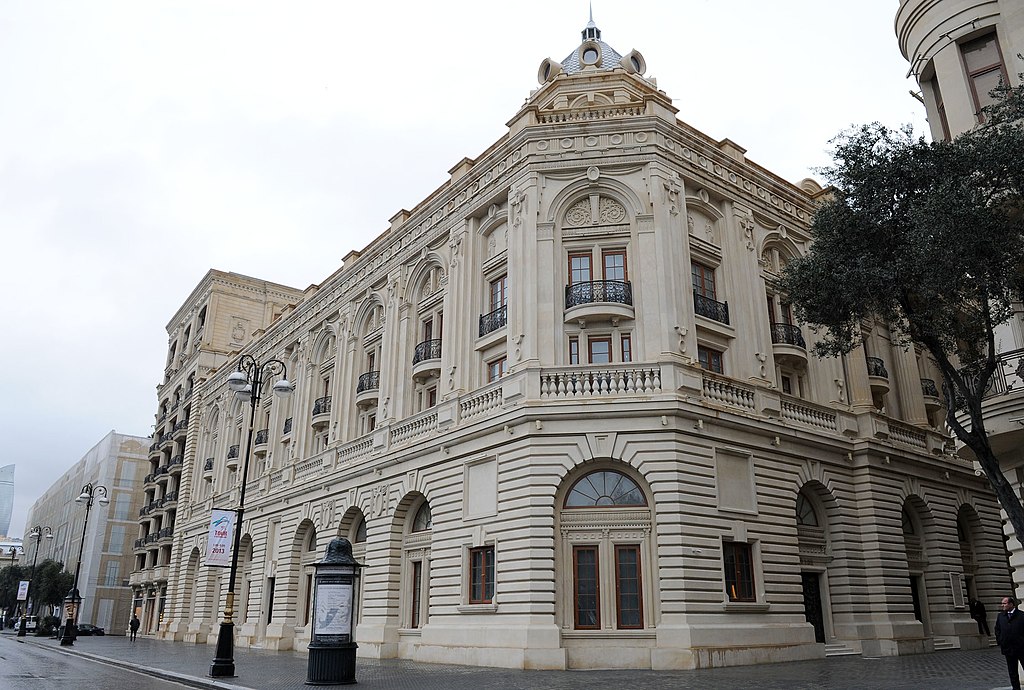
Location
Akademik Zarifa Aliyeva avenue 8Creation
1934 yearNearest station
"Sahil"About
The national musical comedy genre was established in the early in 20th century in Azerbaijan.. The founder of this genre, like Opera, is the great composer Uzeyir Hajibayli. The premiere of "Husband and wife” musical comedy written by Uzeyir Hajibayli in 1909 was held in the circus building of Nikitin's brothers on May 24, 1910. This performance laid foundation of Azerbaijan Musical Comedy Theater age. In the following years Uzeyir Hajibayli’s ", "Arshin mal alan" (1913) and "If not that one, then this one” musical comedies were demonstrated too. Also in pre-revolutionary period, Z.Hajibayov's "Young at fifty years old", "Single while married", M. Kazimovski's "Molla Jabi" and "Vurhavur" musical comedies were also played. The actors like H.Arablinski, M.Aliyev, A.Agdamski, A.Huseynzade, H.Abbasov, A. and Y.Olenskaya, R.Darably and A.Anaply played essential roles in these performances. Musical comedies were played at the Azerbaijan Opera and Ballet Theater till 1938. In 1938, an independent theatre of musical comedy (with Azerbaijan and Russiandepartments) was organized and acquired official status of "Azerbaijan State Theatre of Musical Comedy" in September of the same year. In 1939, in the Azerbaijani section of the theater, "Bride for 5 pound" (S. Rustamov), "Husband and wife", "Single while married” (Z.Hajibayov), and later "Whose wedding?" (A.Mashadibeyov), "Rose” (S.Hajibeyov), in the Russian section "Blue mazur" (F.Lehar), "Arshin mal alan" (U.Hajibayov), "Circus queen" (I.Kalman),” Wedding in Malikovna" (B.Aleksandrov) were shown. In 1950s the repertoire of the theater became rich by the works of F. Amirov's "Heart Thieves" (1944) and "Congratulations " (1946), "Arshin mal alan" (1945) "Mashadi Ibad" (1946) by U.Hajibeyov, S.Rustamov’s "Crane" (1947) and "Ulduz" (1948) opera of S. Alasgarov.
Azerbaijan State Pantomime Theatre
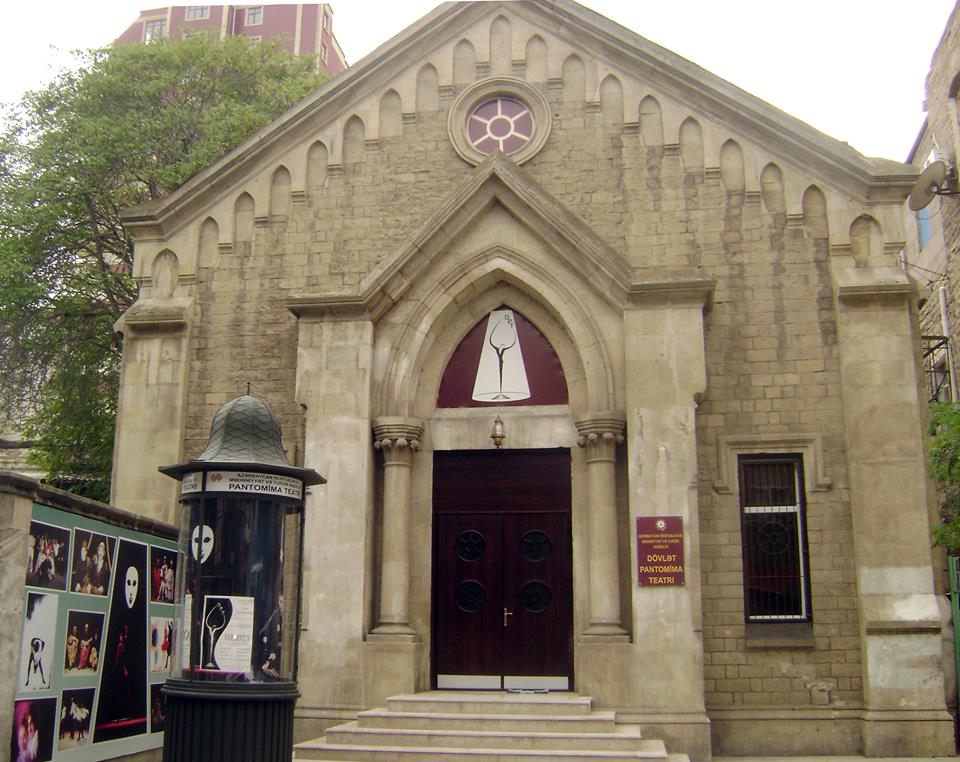
Location
Azadlig avenue 75Creation
1994 yearNearest station
"28 May"About
Pantomime - (Pantomime) is the simplest performance with explanation. It is one of the arts of performance. Briefly, it can be expressed as mimics. In pantomime the artist tries to explain the theme using mimics, hand, arm and body actions. In a sense, pantomime is accepted as the universal language of theater. The main advantages of this type of theater are its possession the international language. State Pantomime Theatre May 16, 1994, established by decree of the Minister of Culture on base of Crazy Assembly Pantomime Theatre-Studio and functioned under the Theater of Young Spectators. The State Pantomime Theatre is the first theater in the history of the Azerbaijani pantomime Theater. The basis of Pantomime Theater in Azerbaijan was laid by honored artists Bakhtiyar Khanizade. The troupe had prepared following performances: Hope Sh.Bekket / Mime for one actor / - Pantomime Pantomime Bouquet - B. Khanizada - Pantomime, Karol fear - S. Mrojek - experimental performance, I came to be the letter of your sad - Pantomime Ballet based on a poem of M. Fuzuli Leili and Majnun ,Shengul, Shungul, Mangul - M. Musabayov - divertisment-performance, Mangurt Ch. Aitmatov / A day equal to the century on the motives of play/ - Pantomime, Pottery - U. Hajibeyov / What work we do on the basis of feuilleton /- Pantomime, Butterflies of dump - B. Khanızade - Pantomime, Love - B. Khanızade (Plastic thoughts on sonnet of W. Shakespeare), Little Prince - Antuan de Sent Eqsupaeryi-tale-performance, Mask - Zaur Zeyanlov - Pantomime, Framework – A.Abdullayev - Pantomime, Dejavu - S. Hajiyeva - Pantomime and etc. In 2000, Crazy Assembly – Deli Yiginjagi” Pantomime Theatre-studio was given the status of the State Pantomime Theatre.
Puppet Theatre, Baku
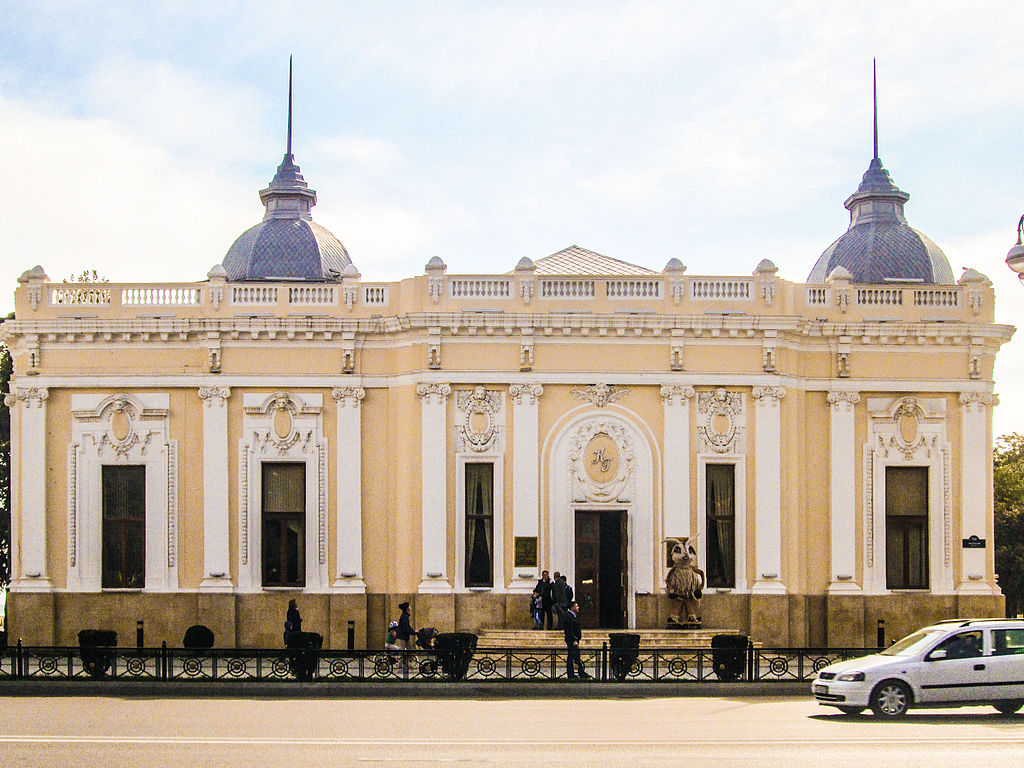
Location
Neftchilar avenue, 36Creation
1910 yearNearest station
"Sahil"About
The Baku Puppet Theatre, or to give it its full title, the Abdulla Shaig Azerbaijan State Puppet Theatre, is an enchanting cultural venue for young visitors. Built in 1910 by Polish architect Józef Płoszko, it was originally a cinema called “Phenomenon” and was later transformed into a theatre known as “Satyragite”. Since 1931, the venue has been a puppet theatre, entrancing generations of kids with puppets in all shapes, sizes and colors.
Azerbaijan State Russian Drama Theatre
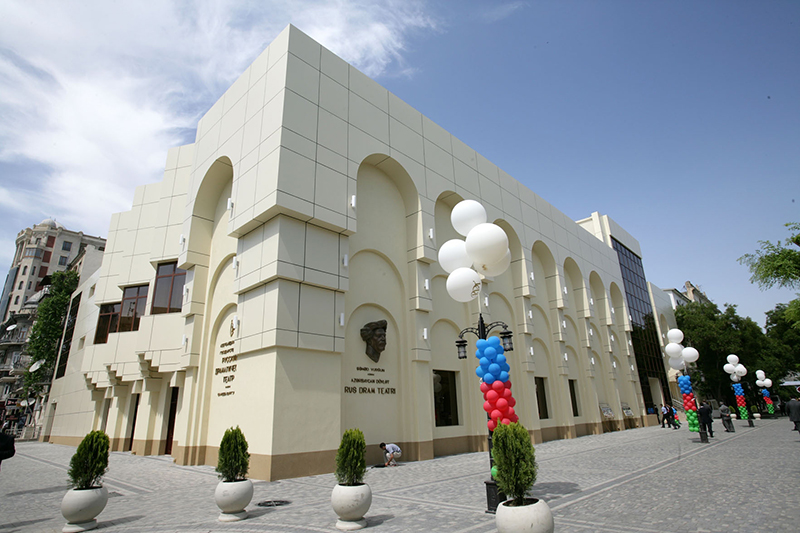
Location
Bakı, Xaqani 7Creation
1920 yearNearest station
"Sahil"About
Azerbaijan State Russian Drama Theatre named after S. Vurgun since 1920 worked under the name of Baku Free promotion –critique theatre since 1920, as Baku Workers’ Theatre since 1923. And since 1938 it is called as Azerbaijan State Russian Drama Theatre. In 1956 the theater was named after S. Vurgun. Theatre had staged during 1925-30 plays like Lyubov Yarovaya (K. Trenyov), Rebellion (B. Lavrenyov), etc. In 1930-40-theater’s repertoire were enriched with works like Don Carlos (F.Schiller), Romeo and Juliet (W. Shakespeare), Living corpse (L. Tolstoy), etc. Staged during 50 years, Aydin (J. Jabbarli), Bathroom (V. Mayakovski) and other performances were evaluated as a creative achievement of the theater. In general, the Russian Drama Theatre has always own importance in the cultural life of Azerbaijan. At the present at stage of the theater works of the world classics and t writers of Azerbaijan are staged. Repertoire of the theater includes L. Qers’ s These free butterflies, Elchin’s Lessors of the hell”, W. Shakespeare\'s King Lear, J. Anuy’s Lark, A. Chekhov” Gull, L. Razumovskaya’s Marriage agency 1 +..., Y. Lomovchev’s Dance of the seven bedsheets”, M. Ibragimov’s, Your Excellency Rolls-roys\', V. Neverov’s Guess the tale. The well-known actors like Fuad Poladov, Nodar Shashıqoglu, Haji Murad Yegizarov, Mabud Maharramov, Lyudmila Dukhovnaya work in theatre. Theatre makes performances not just for adults but for children, too
Azerbaijan State National Academic Drama Theatre
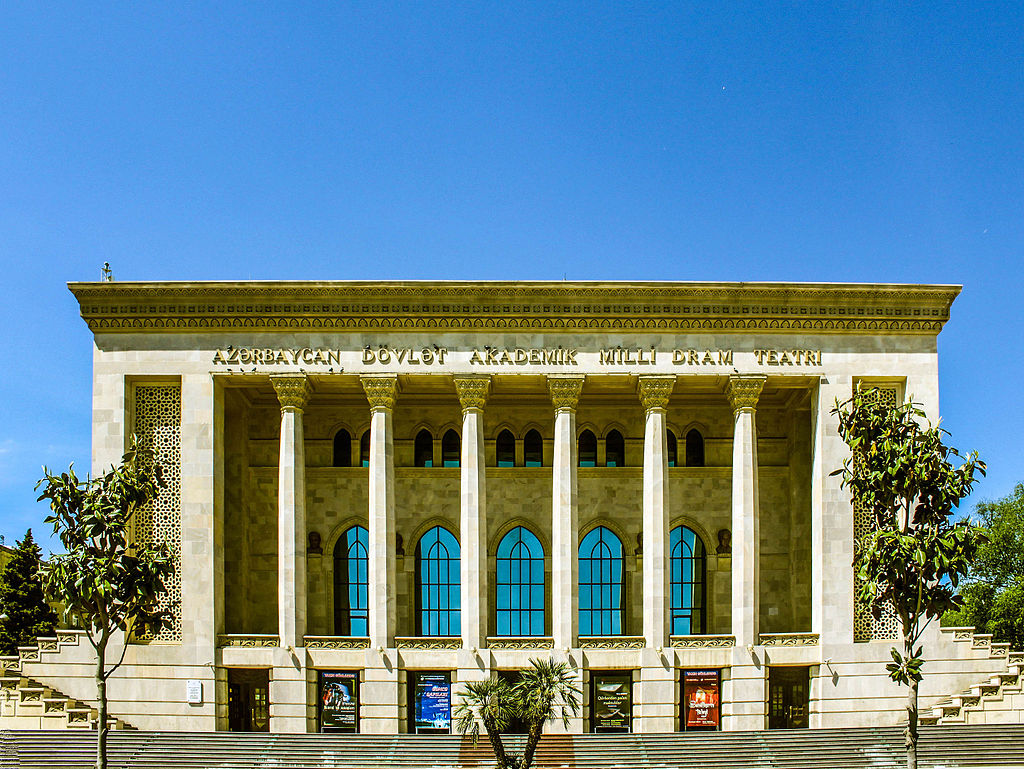
Location
Fuzuli Street 1Creation
1958 yearNearest station
"Nizami"About
On March 10, 1873, in Club of aristocrats” under the guidance of the well-known educator Hasan bey Zardabi pupils of Baku Real school put at stage M.F.Akhundov’s Vizier of Lankaran khan comedy and thus the foundation of professional national theater, in other words, the Academic National Drama Theatre (AMDT) was laid. The theatre, which previously performed spectacles in the form of various troupe (at theatre groups under the Nijat, Safa, Hamiyyət cultural-educational societies, as well as in the form of the Muslim Drama Artists\' Union, Brothers Hajibeyov administration), since 1919 till date had been functioning under the status of the State Theatre. The name of the theater in various years was as Government teatro, the United State Teatro, Azerbaijan Turkish Drama Teatro, named after Dadash Bunyadzade (1923-1933) and Mashadi Azizbeyov (1933-1991). In 1959, for the highest academic achievements the Academic name was given to the theater. This Arts center is called as Academic National Drama Theatre since 1991. During the 125-year history of the theater after creation of actors school of Abulfat Veli, Mohammed bey Alvandi, Hussein Arablinsky, Jahangir Zeynalov, Abulhasan Anaplı, the great generation of actors and directors was trained: People\'s Artists of the USSR Aga Aliyev, Sidgi Ruhulla, Marziyyə Davudova, Alesker Alekperov, Adil Iskandarov (director), Hokumə Gurbanova, Ismail Daghestanli, Ismail Osmanly, Mohsun Sanani, Reza Tahmasib (actor and director), etc. ANDT finding growth with plays of M.F.Akhundov, N.B.Vazirov, A.B.Haqverdiyev, N. Narimanov, J. Jabbarli, H. Javid, S. Rahman, Ilyas Afandiyev had included in own repertoire works of classics of the world like Shakespeare, Schiller Molliere, Lope de Vega, Carlo Haldoni, A. Dumas, V. Hugo, H. Hauptman, Maurice Maeterlinck, Balzac, Eugene O `Nil, B. Nusich, M. Sebastian, H. Heynen, Walter, A. Ostrovski, A. Pushkin, M. Lermontov, L. Tolstoy, N. Gogol, A. Chekhov and dozens others.
National Art Museum of Azerbaijan
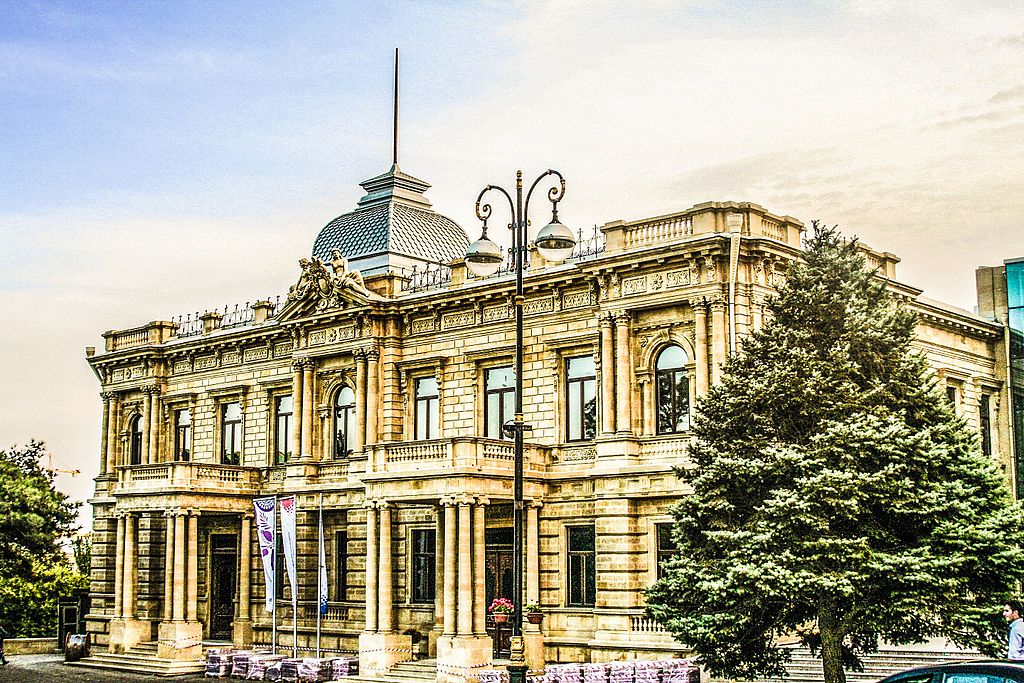
Location
Niyazi St., 9-11Creation
1937-ci ilNearest station
"IcheriSheher"About
National Art Museum of Azerbaijan: is the biggest art museum of Azerbaijan. It was founded in 1936 in Baku and in 1943 was named after Rustam Mustafayev, a prominent Azerbaijani scenic designer and theater artist. The museum consists of two buildings standing next to each other. The museum's total collection includes over 15,000 artworks. There are over 3,000 items in 60 rooms on permanent display. About 12,000 items are kept in storage. The museum changes the exhibits periodically so that more of these artworks can be displayed temporarily. The Azerbaijan National Art Museum is one of the influential museums on world scale which has a rich collection. In the museum are often held international exhibitions devoted to national art of Turkey, Iran, France, Japan, China and Central Asia. Organized scientific lectures, excursions, programmes for families, children and youth, circles, master classes, round tables and discussions are interesting regardless of age and national origin. The Azerbaijan National Art Museum is a treasure house that preserves our national values and universal cultural heritage. There are kept more than 18,000 monuments of art in the museum which has a rich history. In 1924 it was founded as art department under Azerbaijan State Museum. In 1936 according to resolution of Council of Peoples Commissars the art department was separated from the Azerbaijan State Museum and organized as an independent museum.
Azerbaijan State Opera and Ballet Theatre
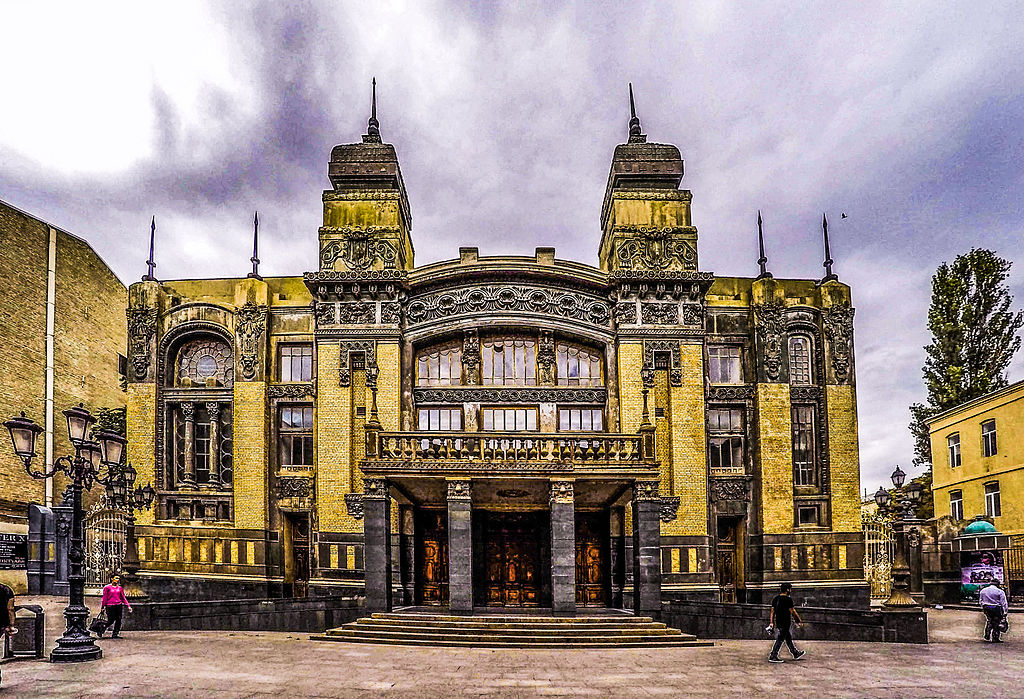
Location
Nizami 95Creation
1910–1911 yearsNearest station
"Sahil"About
Azerbaijan opera culture was founded in 1908 and marked by the premiere of the first opera in the East and in the whole muslim world– “Leyli and Madjnun” that was written great Azerbaijan composer Uzeyir Hadjibeyli. First performance of the opera took place at the H.Z.Taghiyev Theatre on 12 January (25 January) in 1908. The State Opera Theatre was built by the famous russian architect and civil engineer N.Bayev. On 18th of October in 1918 Azerbaijan Democratic Republic gave the offical status and it became known as the Azerbaijan State Opera and Ballet Theatre. In 1959 it received the status of an academic theatre. Now days Azerbaijan State Opera and Ballet Theatre is the one of the leading cultural institutions. It’s wide range repertoire consists of the national and classical opera and ballet productions.There are four sections in the theatre – opera team, symphony orchestra, ballet company and choir. Since it’s opening the State Opera Theatre had played leading role in the cultural life of the country. As the only opera and ballet company in Azerbaijan it has formed and set up all the best traditions in this genre. During the different years and periods great artists such as Fyodor Shalyapin, Leonid Sobinov, Valeriya Barsova, Irina Arkhipova, Elena Obraztsova, Mara Bieshu, Maya Plisestkaya, Montserrat Caballe , Jose Carreras, Zurab Sotkilava, Vyatcheslav Gordeev, Vladislav Piavko, Svetlana Zakharova, Anastasia Volotckova took part in the opera and ballet productions on the stage of the Azerbaijan State Opera Theatre. Below there are names of some great Azerbaijan composers, conductors, singers and artists who played significant role in the history of the theatre.
Memorial museum of Haji Zeynal Abdin Taghiyev
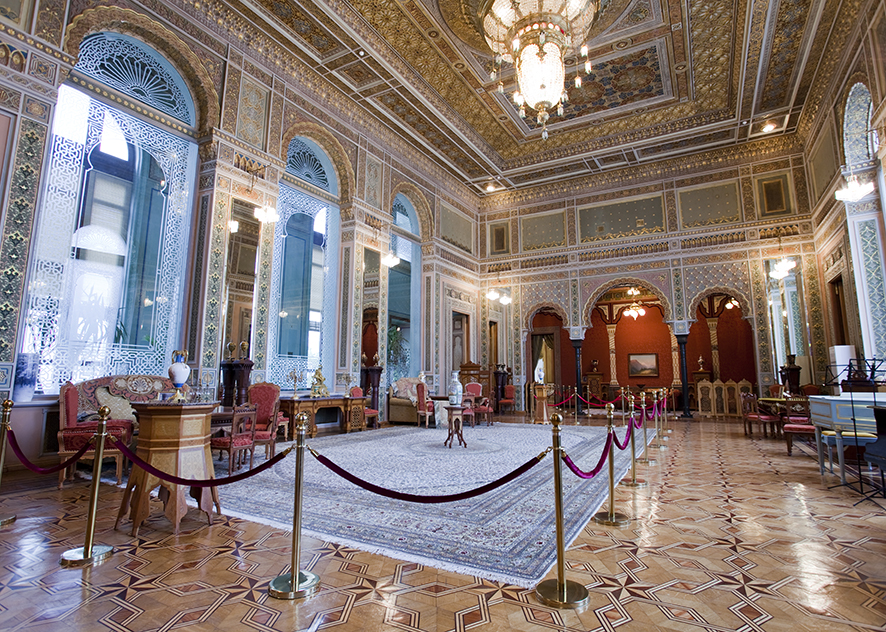
Location
Haji Zeynalabdin Taghiyev 4Creation
1893–1902 yearsNearest station
"Sahil"About
Restoration of rooms, personal belongings, and furniture of the Memorial museum of H. Z.A. Taghiyev has been organized by specialists from Azerbaijan and Italy, based on the family photo-album they managed to restore the previous interior of the rooms. The Memorial museum includes: 1) the Taghiyev’s study, 2) Oriental Hall, 3) a library 4) a billiard room, 5) a dining room, 6) a monitored room, 7) a boudoir, 8) a bedroom, 9) a dressing room. The exposition of the Memorial museum begins with the Taghiyev’s study. The study was notable for its severe beauty. Its walls have been decorated with patterned green wallpaper and redwood. Besides the furniture belonged to Taghiyev there are a bookcase, a writing desk, an armchair, a chair, a cupboard as well as some other belongings restored by the help of restorers based on his old family photo-album. Code of laws of the Russian Empire, reference-books and encyclopedias are collected books from his private library in the bookcase. Every morning Taghiyev’s secretaries read him periodic literature of local, Russian, European as well as Eastern press discussing the most important articles and information. Behind the writing desk on the wall there is Taghiyev’s own photo, on the left side- the portraits of the Russian emperor Nicholas II and his wife Alexandra Fedorovna. Opposite the windows of the study there is a canvas painted by Ayvazovsky “Storm in the sea”. The painting that depicts H.Z.A.Taghiyev’s meeting with Muzaffar-ad-Din Qajar now is in the same place as during Taghiyev’s period. There is a portrait of H.Z.A.Taghiyev in front of the writing-table. It was a decision of the city council to order a portrait of H.Z.A.Taghiyev for his contribution and financial aid to the construction of technical college in Baku. The portrait was painted by a well-known artist I.Brodsky in 1912. H.Z.A.Taghiyev was depicted with all medals and orders. Included among them are Russian orders of “Saint Stanislav”, three golden medals “For diligence”, of the Qajar State order “Shiri- Khurshid” (“Lion and Sun”) and Bukhara “Golden star”. Following the study there is an Oriental hall. The Oriental hall as palace’s one of the biggest halls combines ancient oriental ornaments famed for their beauty and grandeur. Official meetings, receptions and solemn ceremonies were held there. The doors of the Oriental hall were made of walnut, beech and pear tree and the hall itself was decorated artistically. There are openwork tables, chairs, armchairs, a grand piano and so on. The ceiling was decorated with Kuran ayats. Nine kilograms of gold were used for inscription and decoration. A huge chandelier and sconces above the mirrors illuminate the hall and increase its beauty. Inscription in Arabic on the windowpanes denote H.Z.A.Taghiyev’s name and surname. Six-pointed stars interspersed in different parts of the hall and widespread in Muslim architecture, are in the form of Solomon’s signet ring. According to belief, it protects a human from the evil eye. Arches in the upper part add additional beauty to the Oriental hall. Passing through the arches you find yourself in H.Z.A.Taghiyev’s library. H.Z.A.Taghiyev made great efforts for prosperity of enlightenment. Works of prominent writers, poets and historians were published at the expense of H.Z.A.Taghiyev. Taghiyev owned a newspaper “Kaspi” and he was the first to publish Koran in Azerbaijani at its publishing house. He made great efforts for establishment and subsequent activity of philanthropic societies “Nashri- maarif”, “Nidjat”, etc. There is a set of furniture, two wooden tables, chairs, armchairs, and bookcases. Code of laws of the Russian Empire is kept in the bookcases. A carpet and curtains adorn the room. The door on the right of the library leads to the billiard room. There is a billiard table in the middle of the room. A leather high back sofa and armchairs were meant for rest. A chandelier in special shape adorns the room. When going out of the billiard room and the library, you enter the arched nook again. The door on the left leads to the dining- room. The walls were upholstered with panne. There is a right-angled table and velvet- covered chairs. Silver enameled dinner set which was a present of Bukhara emir is on the table. The other dinner set, cut glass goblets and silver knives with H.Z.A.Taghiyev’s monogram brought by him from France are in the cupboard. There is a big ornamented sideboard made of walnut in the room. The door on the left of the canteen leads into a room with an interactive table. There is information on entrepreneurship and public activity of H.Z.Taghiyev, his family and his charitable activities across Azerbaijan and beyond its boundaries on the large-scale touch screen in the new exposition of the Memorial Museum. The information is presented in three languages: Azerbaijani, English and Russian. One of the advantages of the interactive table is that four visitors can get acquainted with the information mentioned there simultaneously. To the left from this room there is a small sitting room of H.Z.A.Taghiyev’s second wife Sona khanum. Haji married a second time after Zeynab khanim’s death. From his first marriage with Zeynab khanim, Taghiyev had three children. Sona khanim was a daughter of general Balakishi bey Arablinski. They married in 1896. Despite forty years of disparity in age, it was a happy marriage. From this marriage they had five children. Sona khanim’s small room differs from other rooms for its beauty and originality. The ceiling was covered with plate glass and walls were decorated with colorful ornaments. The room is also called “mirror hall”. There is an original round sofa in the middle of the room. It has a special place for lamp. There are quadrangular ornamented tables, soft chairs, and chairs. A corridor following the sitting room leads to the bedroom. The bedroom consists of two parts separated from each other by a wooden ornamented partition. The first part includes a double bed and a cheval glass. In the second part there is a small circular table, a sofa, armchairs, and chairs. A carpet and curtains adorn the room. There is a small room attached to the bedroom. It is a dressing room. It includes a vanity mirror, an easy chair, a table and wardrobes. You can see adornments on the vanity mirror.
Museum of the Nobel brothers
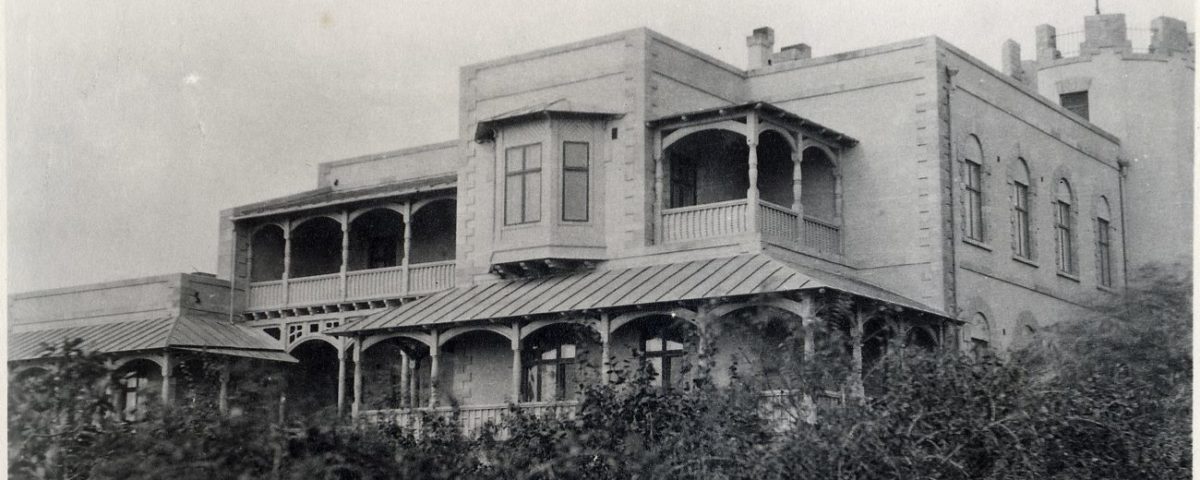
Location
November 8, Baku, KhataiCreation
1884 yearNearest station
"Khatai"About
This building, called Villa Petrolea, is the only museum of the Nobel brothers outside of Sweden. Construction of the building began in 1882 and was completed in 1884, the same year the Nobel family first moved to Baku. Their magnificent mansion was built in the Byzantine style and designed by a Swedish architect named Fyodor Lidval. It was also the first building in Baku to have a telephone line and ventilation system. The lower floors were reserved for the Nobels'office, while the upper floors housed a club, lounge rooms and a library. The whole interior was richly decorated: paintings and books for the library were brought from St. Petersburg, and expensive carpets woven by Azerbaijani and Iranian carpet weavers were laid in the rooms. The building was owned by the Nobel brothers until 1920. Before a house museum was opened in the building, it functioned as a hospital and later as an orphanage. Today, the museum exhibits various household items used by the Nobel family, as well as displays reflecting that period. In addition to the house's own belongings, items brought here from the Nobels’ houses in St. Petersburg and Sweden can also be found. Admission is free to the museum, which is open daily from 10am to 6pm.
Azerbaijan Carpet Museum
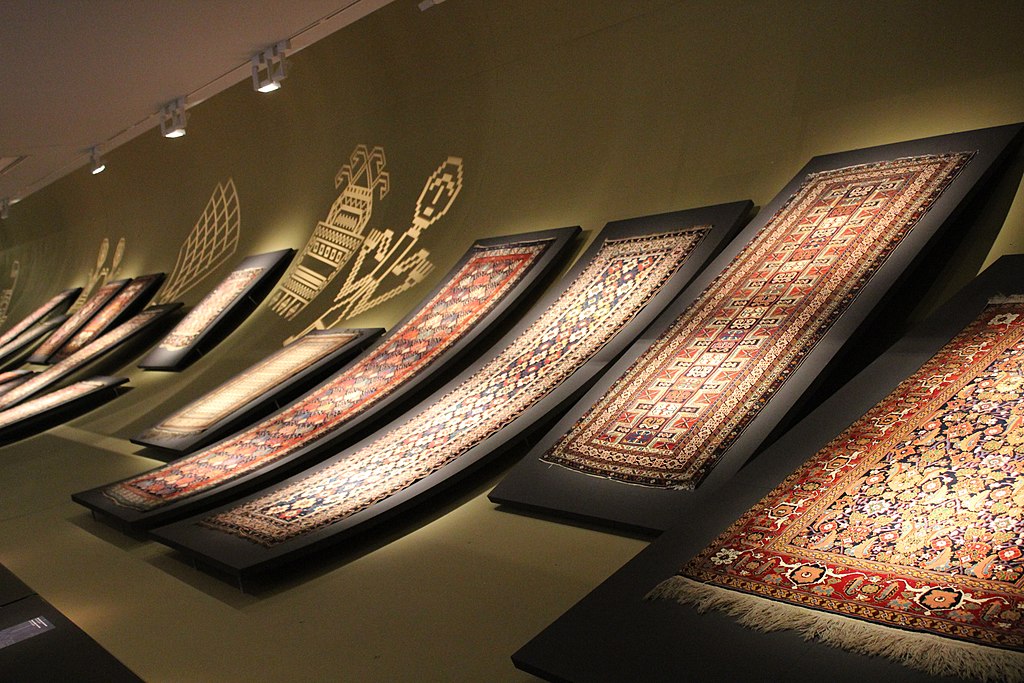
Location
Mikayil Useynov avenue, 28. Seaside National ParkCreation
1967 yearNearest station
"IcheriSheher" ,"Sahil"About
Azerbaijan Carpet Museum was established in 1967. At the time of establishing, it was the only museum that was dedicated to the art of carpet weaving. The main purpose of the creation of the museum was to store, research, and demonstrate unique examples of the carpet weaving art, which are the Azerbaijan’s national heritage. As a result, numerous research expeditions in different regions of Azerbaijan were enriched museum funds by items of the material culture of the country. Here, were collected the Azerbaijani carpets, carpet items, and other kinds of crafts. The museum vault houses seven collections: Pile Carpets; Flat-woven Carpets; Carpet Products; Artistic Metalwork; Ceramics, Glass, Wood, Paper; Textile, Costume, Embroidery; and Jewelry. The museum stores curiosities related to the Bronze Age, the Ancient Period, and the early Middle Ages, while the greater part of the collection dates back to the 17th to 20th centuries. Today, the Azerbaijan Carpet Museum, which is located in one of the country’s most modern buildings, not only stores a rich collection of artifacts and carpets, but also operates as the site for the comprehensive research of traditional carpet weaving art and its popularization within world culture.
Azerbaijan State Song Theatre
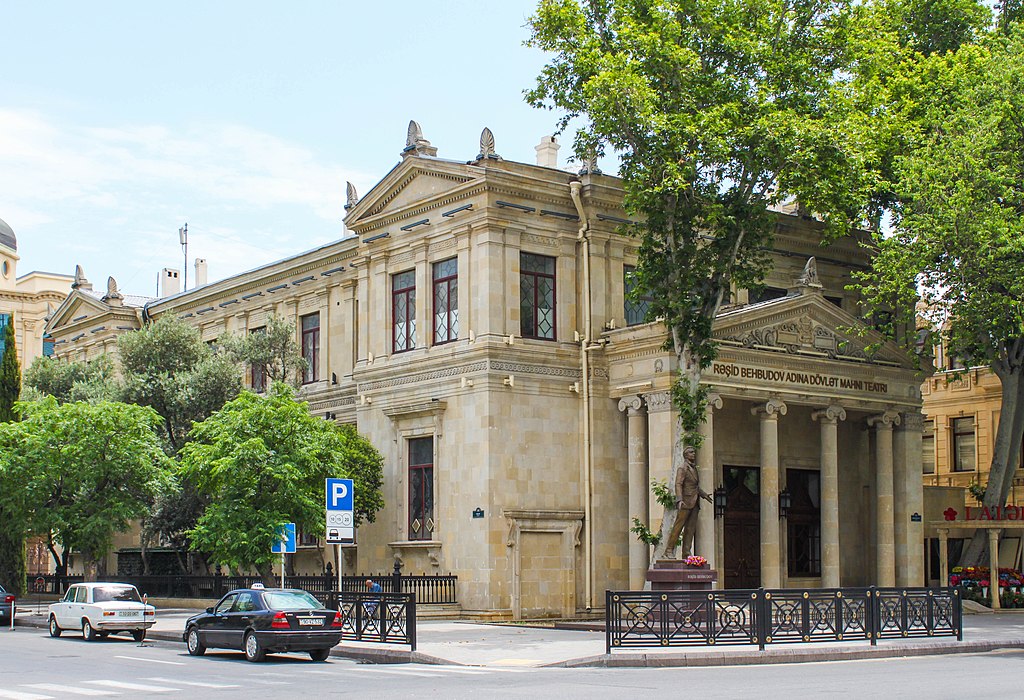
Location
Baku city, Sabail district, Rashid Behbudov street 12Creation
1968 yearNearest station
"Sahil"About
Azerbaijan State Song Theatre named after Rashid BeybudovAzerbaijan State Song Theatre named after Rashid Beybudov is the first song theatre in the history of Azerbaijani theatre. It was founded in 1968 by an outstanding representative of vocal arts, People"s Artist of the USSR Rashid Beybudov. Today the theatre’s repertoire consists of compositions of such national composers as Uzeyir Hajibeyov, Gara Garayev, Fikret Amirov, Jahanghir Jahanghirov, Rauf Hajiyev, Tofig Guliyev, Polad Byulbyul ogly, Ramiz Mirishli, Faig Sujeddinov, Azer Dadashov and others. The original singing style that was inherent in our great singer Rashid Beybudov is still preserved in the singing of folk songs, mugams and tesnifs that make up the bulk of the repertoire. Over the years of its existence the theatre was the workplace of such folk art masters as Zaur Rzayev, Natavan Sheykhova, Mubariz Taghiyev, Elkhan Ahadzadeh, Khadija Abbasova, Azer Zeynalov, Zokhra Abdullayeva, Aybeniz Gashimova, Gulyaz and Gulyanag Mammedovas, Bilal Aliyev and others. Azerbaijan State Song Theatre has been warmly welcomed in many countries, including USA, France, Sweden, Switzerland, India, Pakistan, Germany, Turkey, Russian Federation etc. Over the last few years its on-stage performance group took part in the concert program of the EXPO-2000 opening ceremony in Hannover in 2000, represented Azerbaijan’s culture in 2001-2002 in Turkey, Moscow, Strasbourg, Austria, at the Days of Azerbaijani Culture in Germany in 2003, at the Novruz Holiday in Yekaterinburg in 2004, in Austria again at the Days of Azerbaijani Culture in Vienna in 2005 and at the International Music Festival Mertsishor in Chisinau, Moldova.
Qala Archaeological and Ethnographic Museum Complex
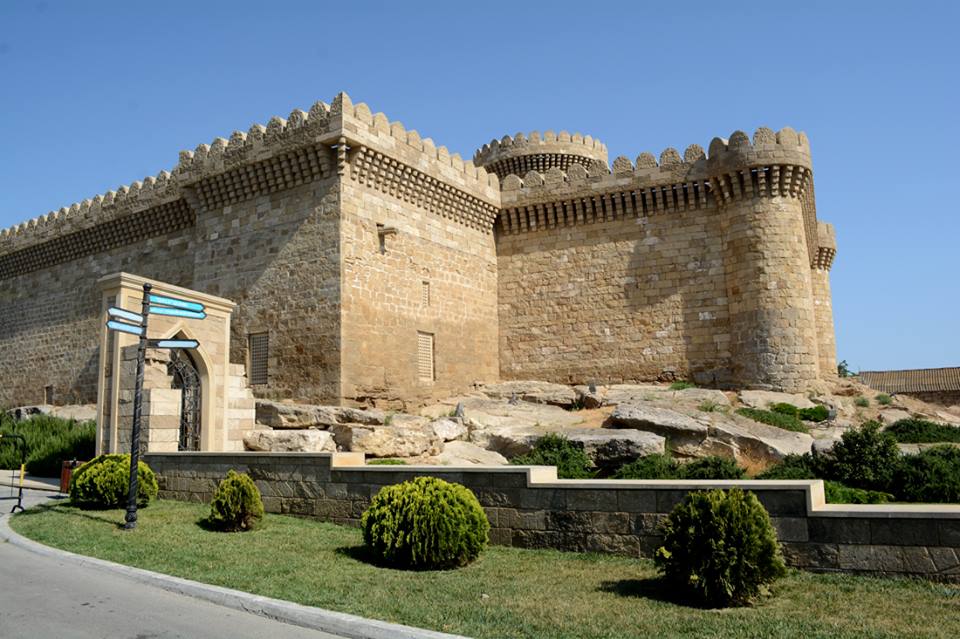
Location
Qala villageCreation
2008 yearNearest station
"Koroglu"About
In 2008, the Heydar Aliyev Foundation created the Qala Archaeological and Ethnographic Museum Complex in the open air to preserve the monuments in the territory of the Qala State History and Ethnography Museum and enrich the Preserve by bringing in archaeological finds discovered in Absheron. On October 10, 2008, President Ilham Aliyev and his spouse Mehriban Aliyeva attended the inauguration of the museum complex.Petroglyphs covering the period from the 3rd and 2nd millennia B.C. to the Middle Ages, gavaldash (tambourine stone), ceramics, domestic and adornment items, weapons and coins, conserved remnants of an ancient residential complex etc. found in the Absheron peninsula were placed at the Complex. Following the Heydar Aliyev Foundation’s initiative, the Absheron Archaeological Expedition of the Archaeology and Ethnography Institute under the National Academy of Science of Azerbaijan have carried out excavation works here during the years of 2010-2011. As a result of the excavations, various finds related to the 3rd and 2nd millennia B.C., as well as 14th and 15th centuries were discovered. At the Qala Complex, on-rock and under-rock habitats, petroglyphs, ancient foundations, primitive wall remnants related to the Bronze Age, two underground tunnels leading to the Caspian Sea and Baku city related to the 10-14th and 10-15th centuries and a tendir related to the 18th century are demonstrated. Mainly human and animal figures, various fragments were engraved on the rocks here. The Qala Fortress related to the 10-14th centuries includes a tower and a stronghold. Used for surveillance and defence, the tower related to the 10-14th century is 13.8 meters tall. Golden coins, remnants of a golden bracelet and ceramic samples related to the 10-16th centuries are displayed in a stronghold related to the 16-17th centuries. This accomplished project contributes to turning our country to one of the tourist places, in addition to preserving Azerbaijan’s historical past.In 2011, the Qala Information Centre, the Ethno-Ecological Centre and the Qala Antiques Museum were created in the territory of the Qala Museum Complex, and a caravanserai-restaurant started to function. Through the Qala Information Centre, tourists and visitors may receive detailed information of the museums located in the Preserve’s territory, and electro-busses and bikes may be rented here. In the Qala Festival held with support from the Heydar Aliyev Foundation in 2010, handicrafts of artisans immortalizing traditions of textile, pottery and coppersmithery were demonstrated, master classes organized for children, representatives of young generation were given opportunity to become acquainted with our old household and ethnographic traditions. Interest shown towards the Festival stimulated the idea of creating the Ethno-Ecological Centre. All conditions have been created at the Ethno-Ecological Centre to ensure children’s rest, learning our nation’s old history and culture, mastering various types of old popular art, as well as holding various events. Created in the territory of the Museum Complex, the ground floor of the caravanserai-restaurant is functioning as a cafe, the first floor as a restaurant. 14 rooms (7 open and 7 closed) in the Oriental style have been created in the caravanserai restaurant’s backyard. Conditions have been created in the territory of the Museum Complex for the movement of physically disabled people, security cameras installed, a parking lot in a 35 sq.m.-area and a garage for electro-cars were built.
